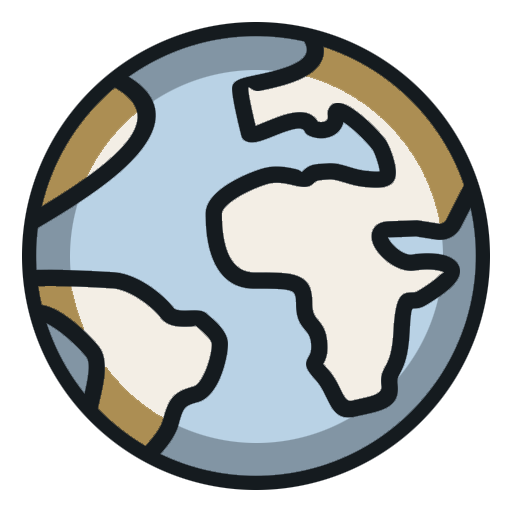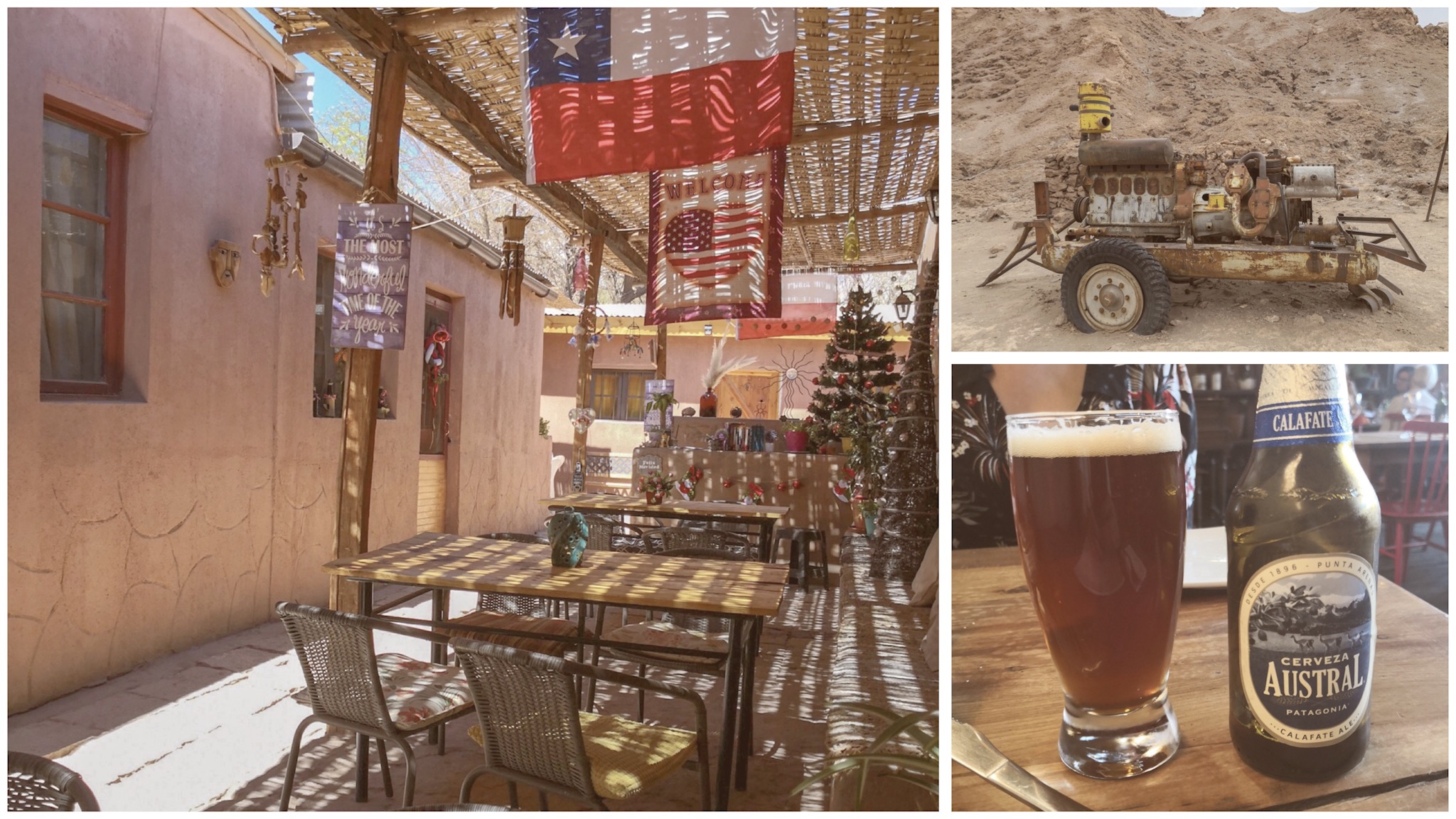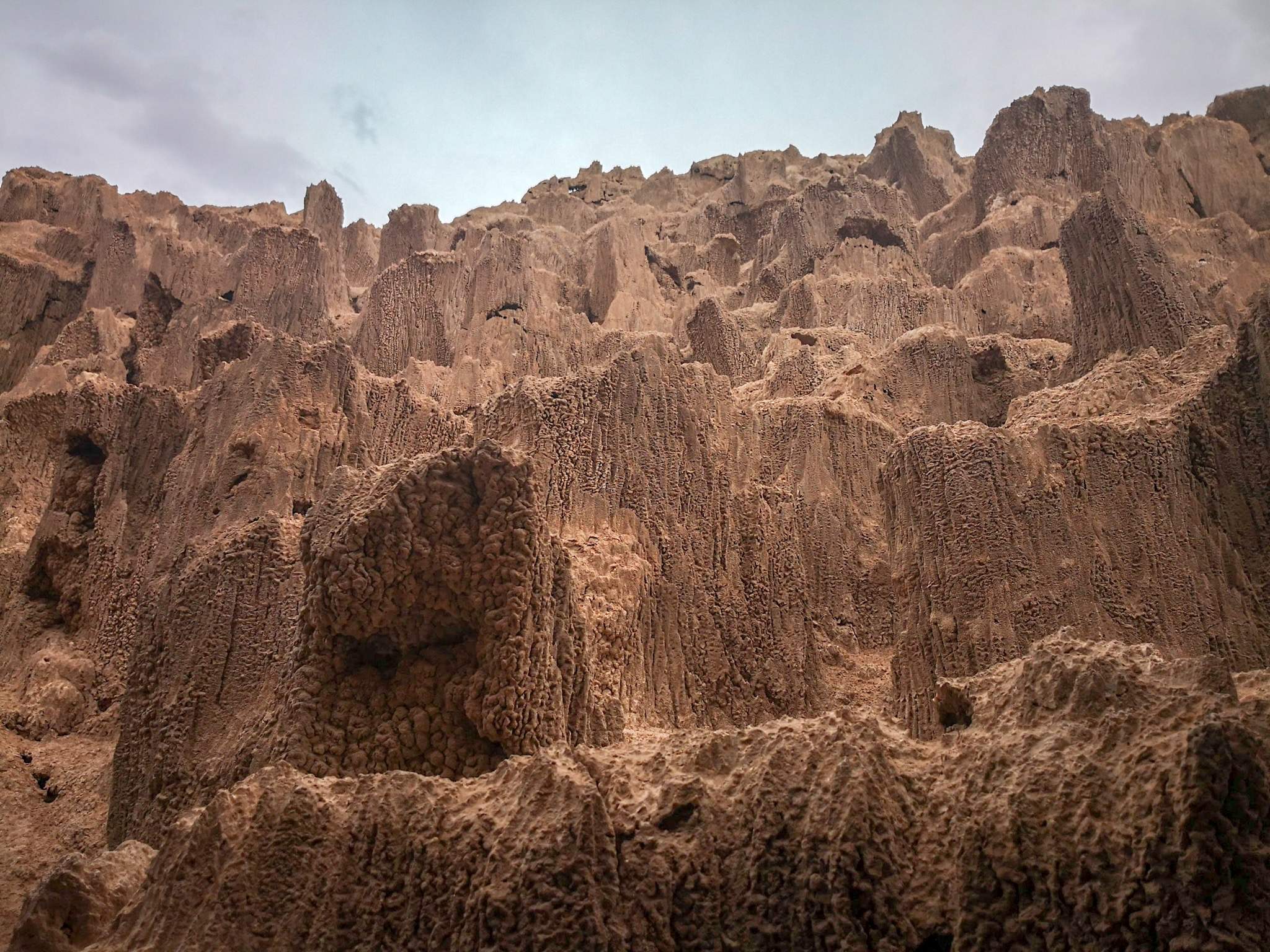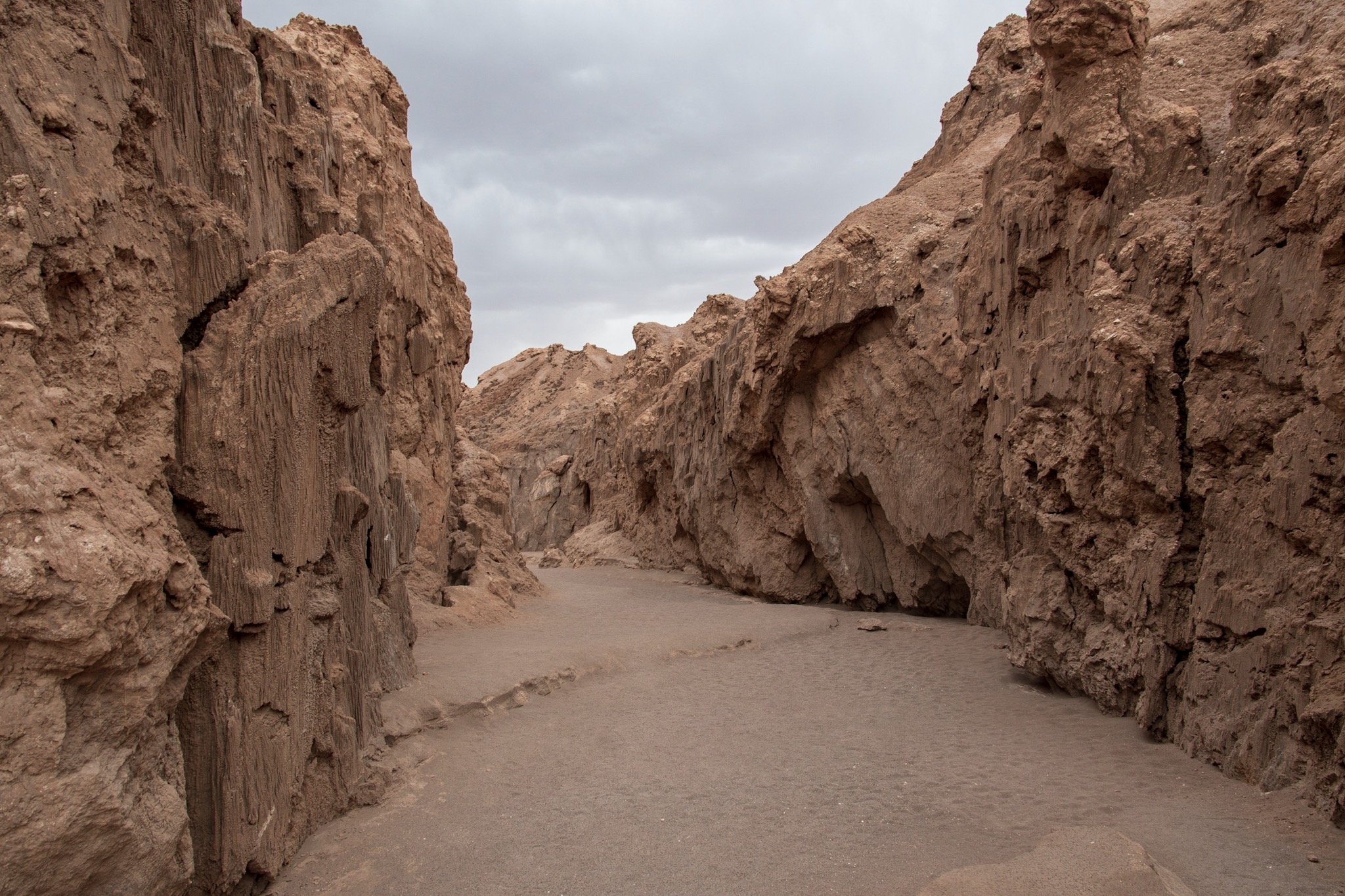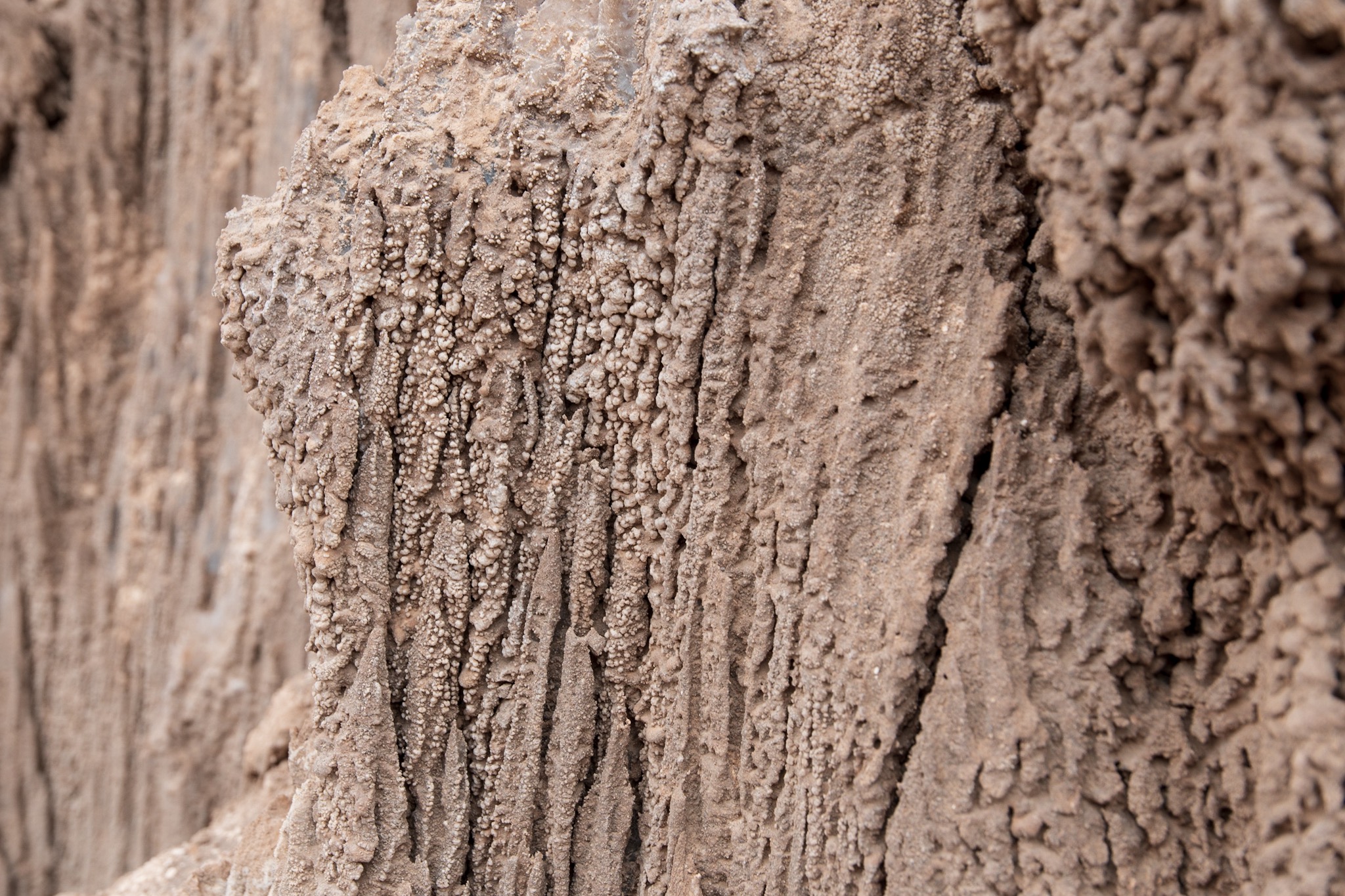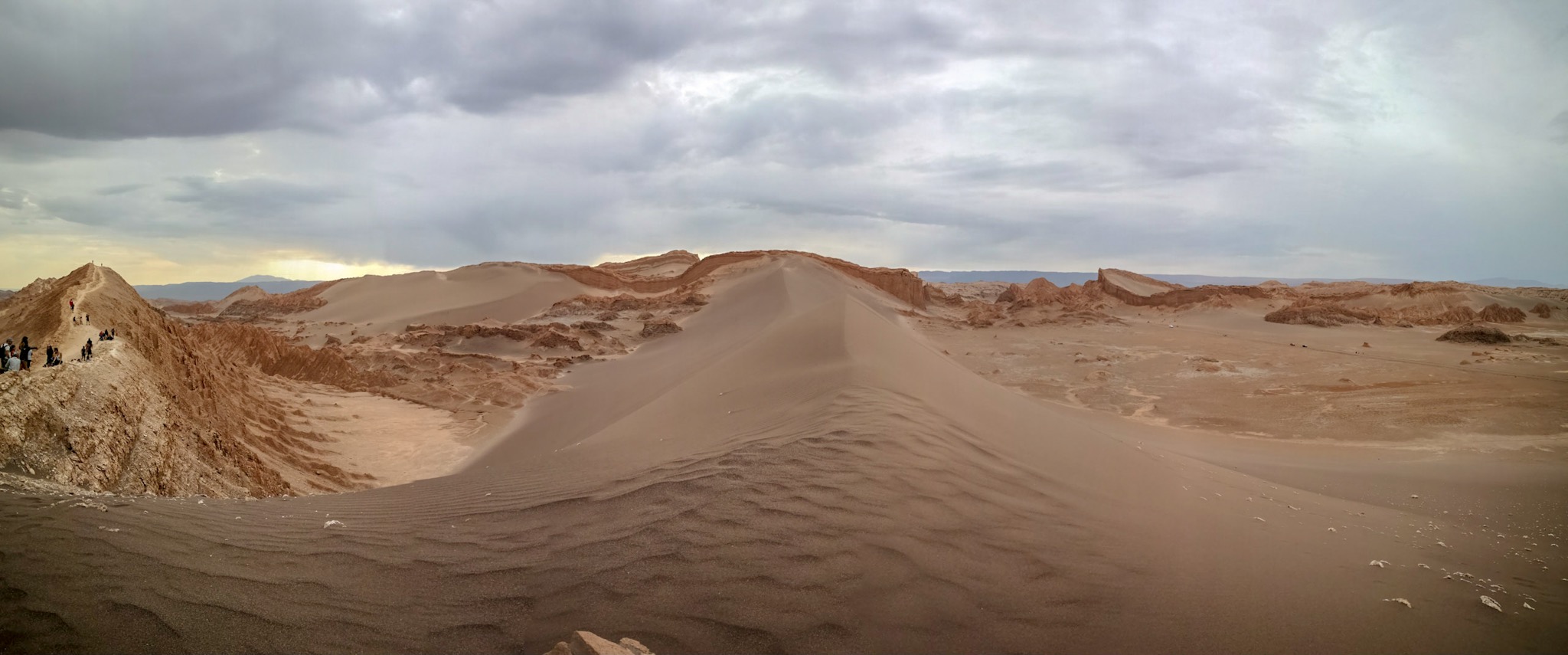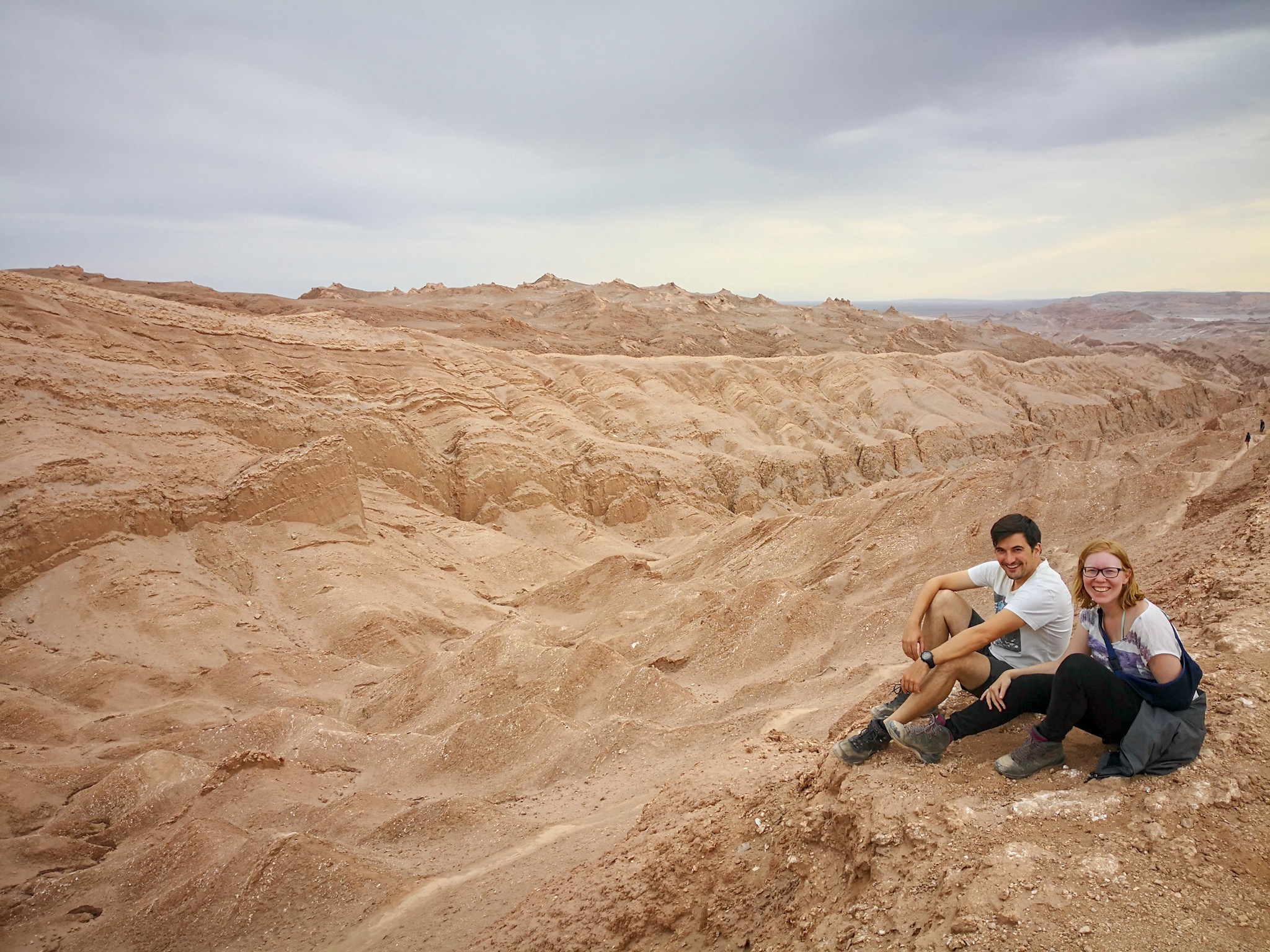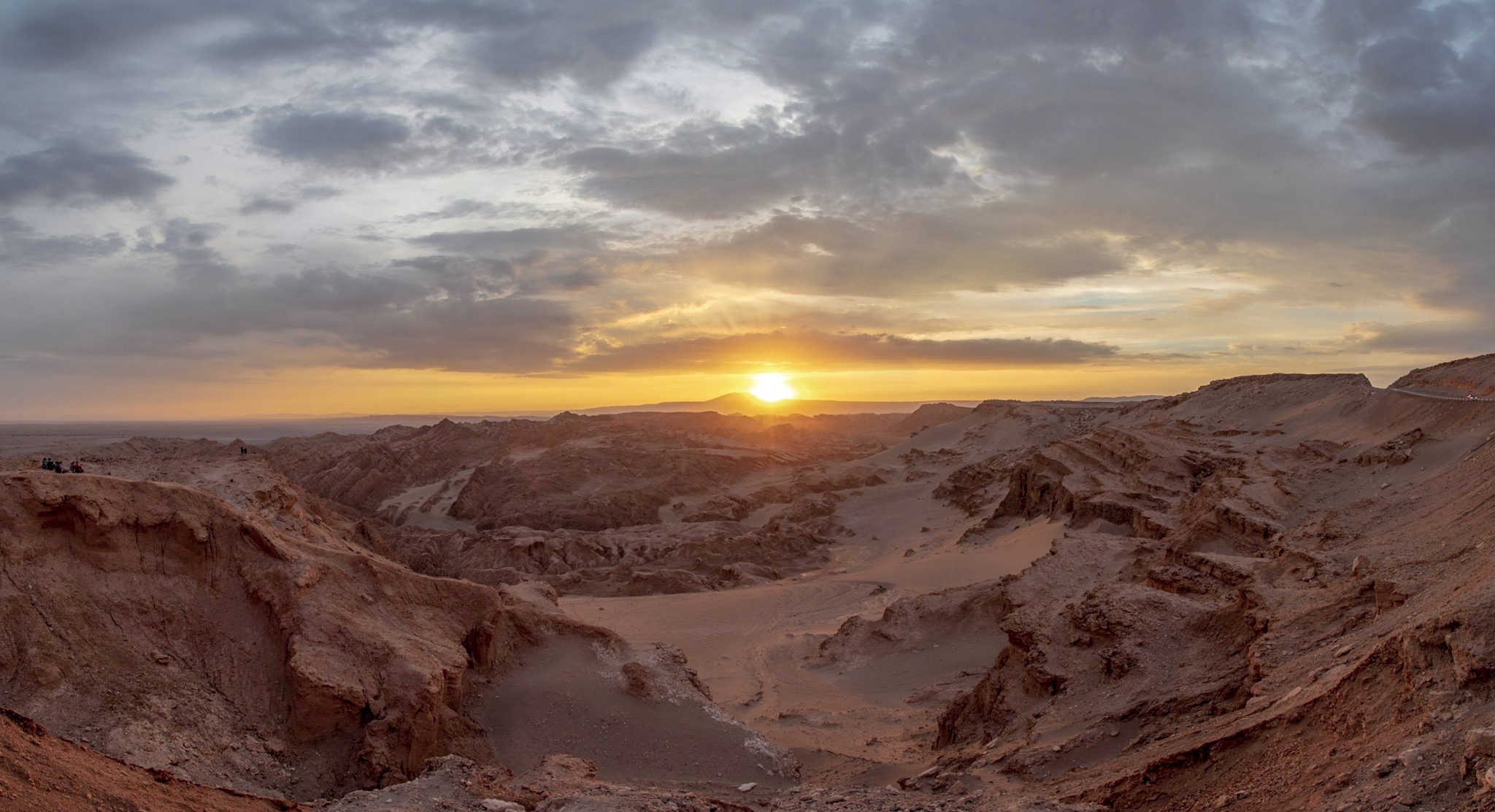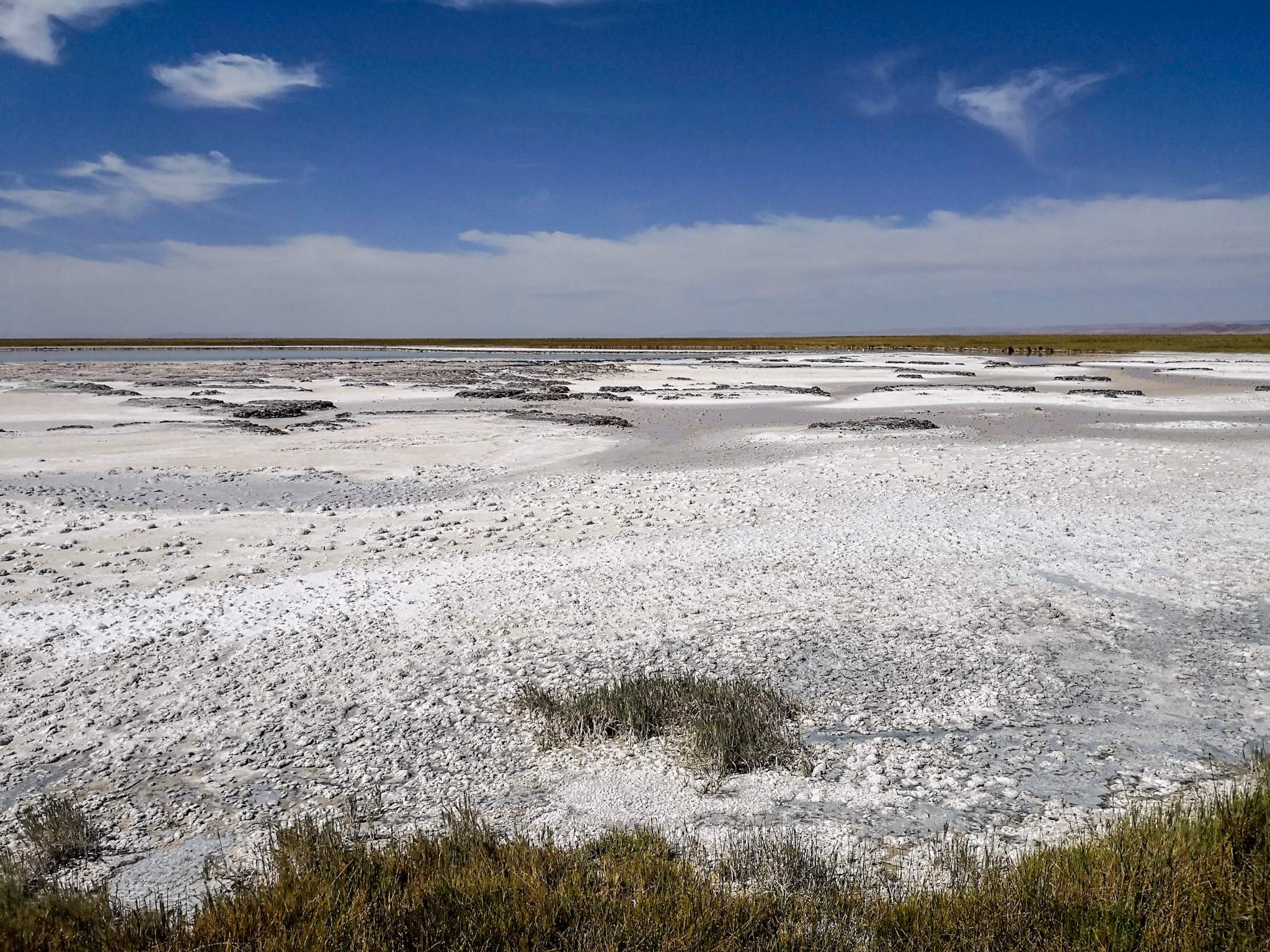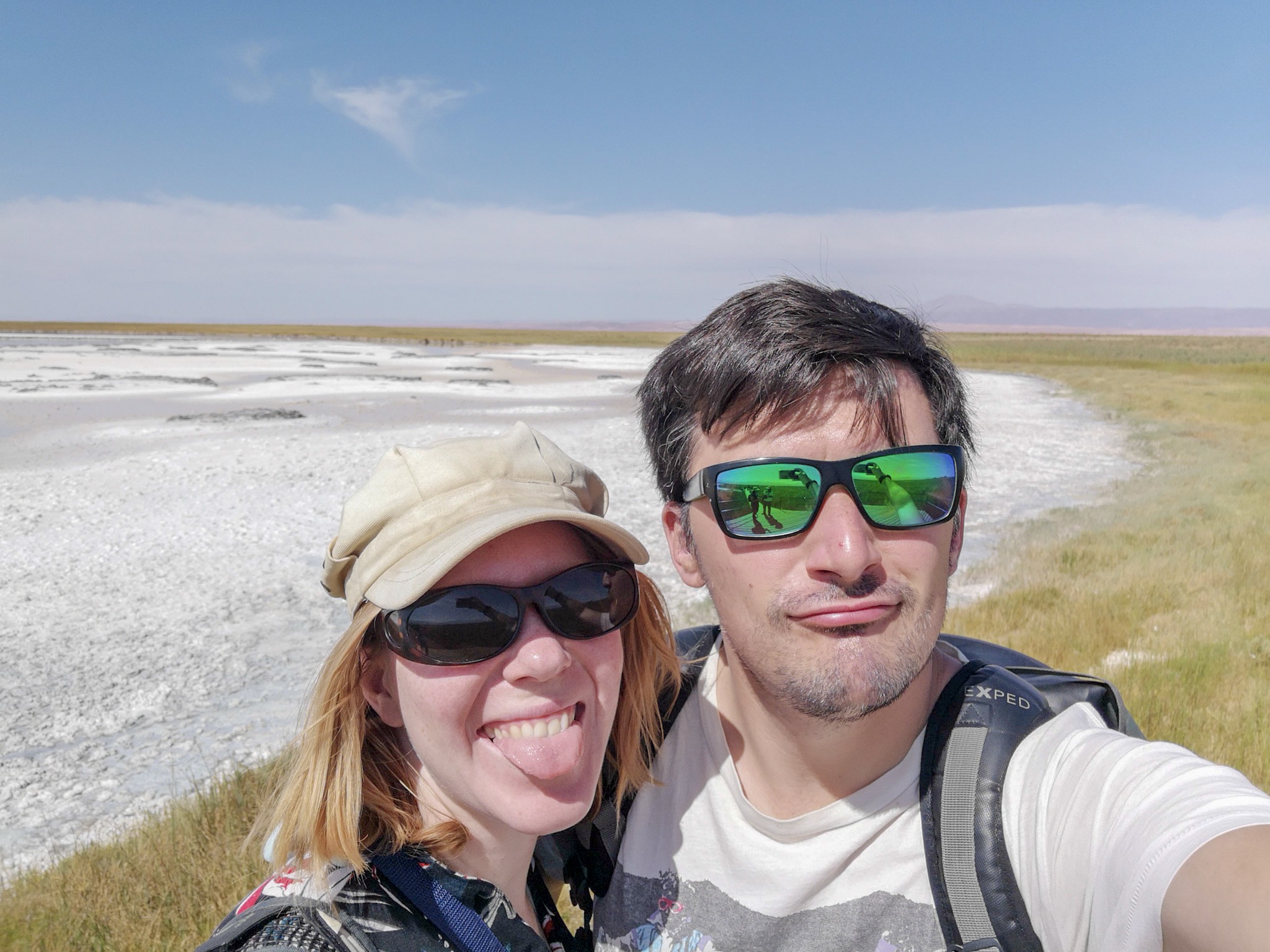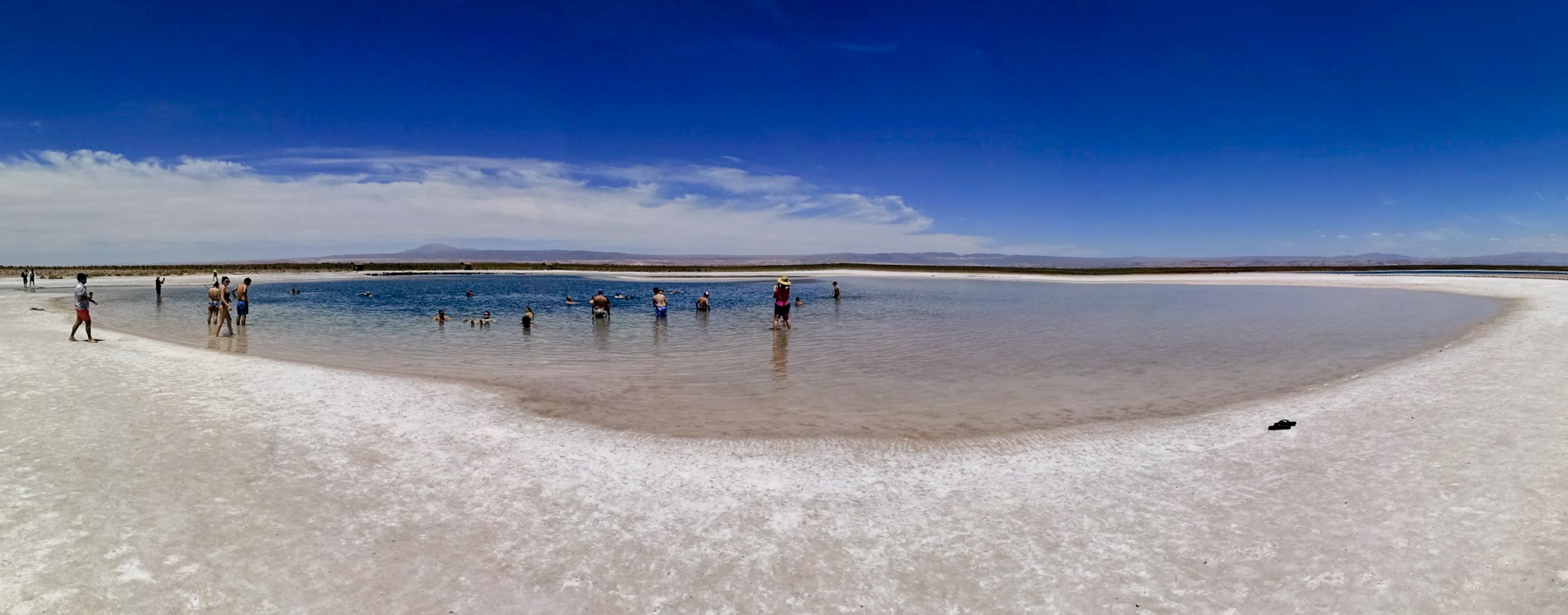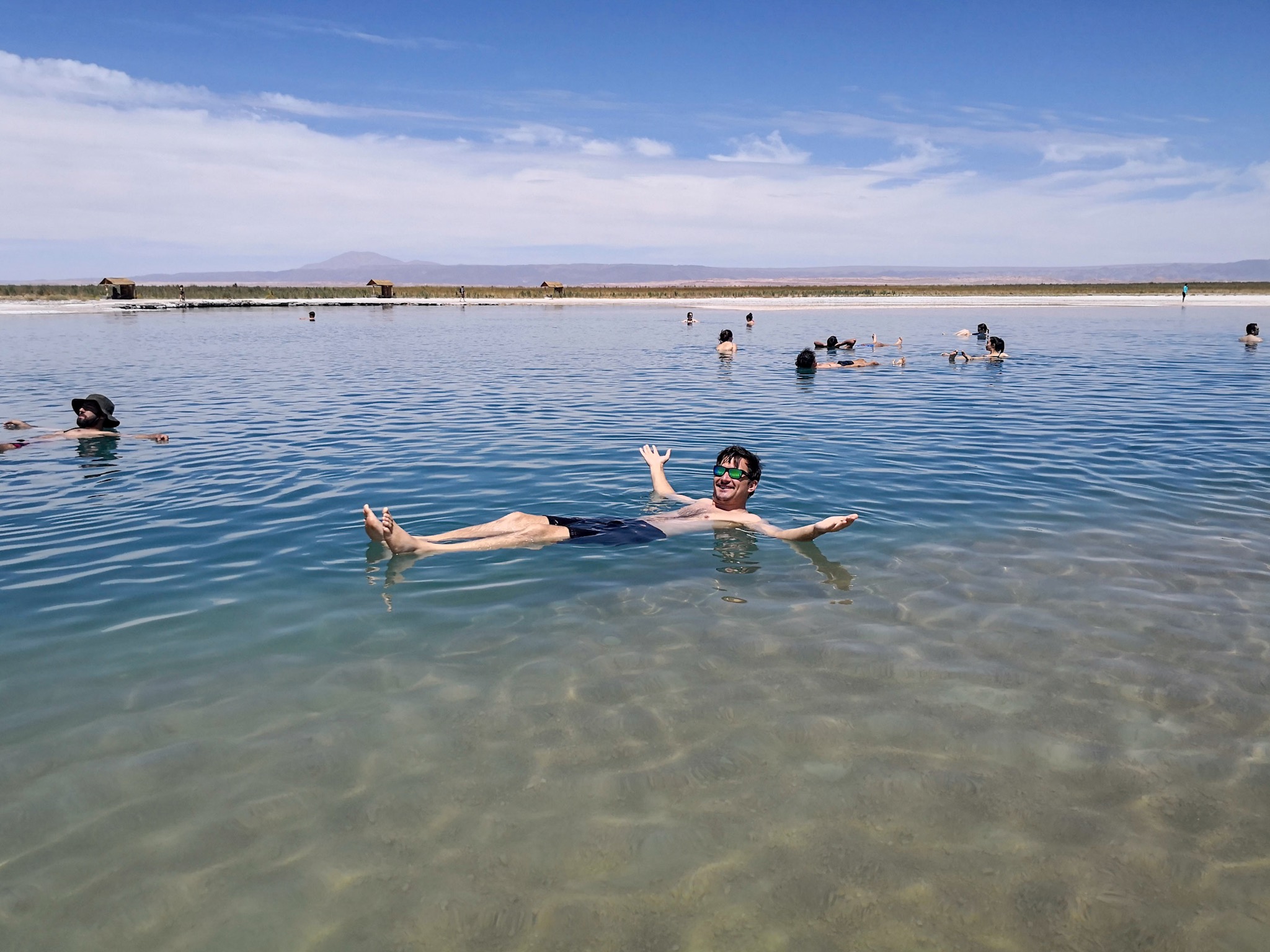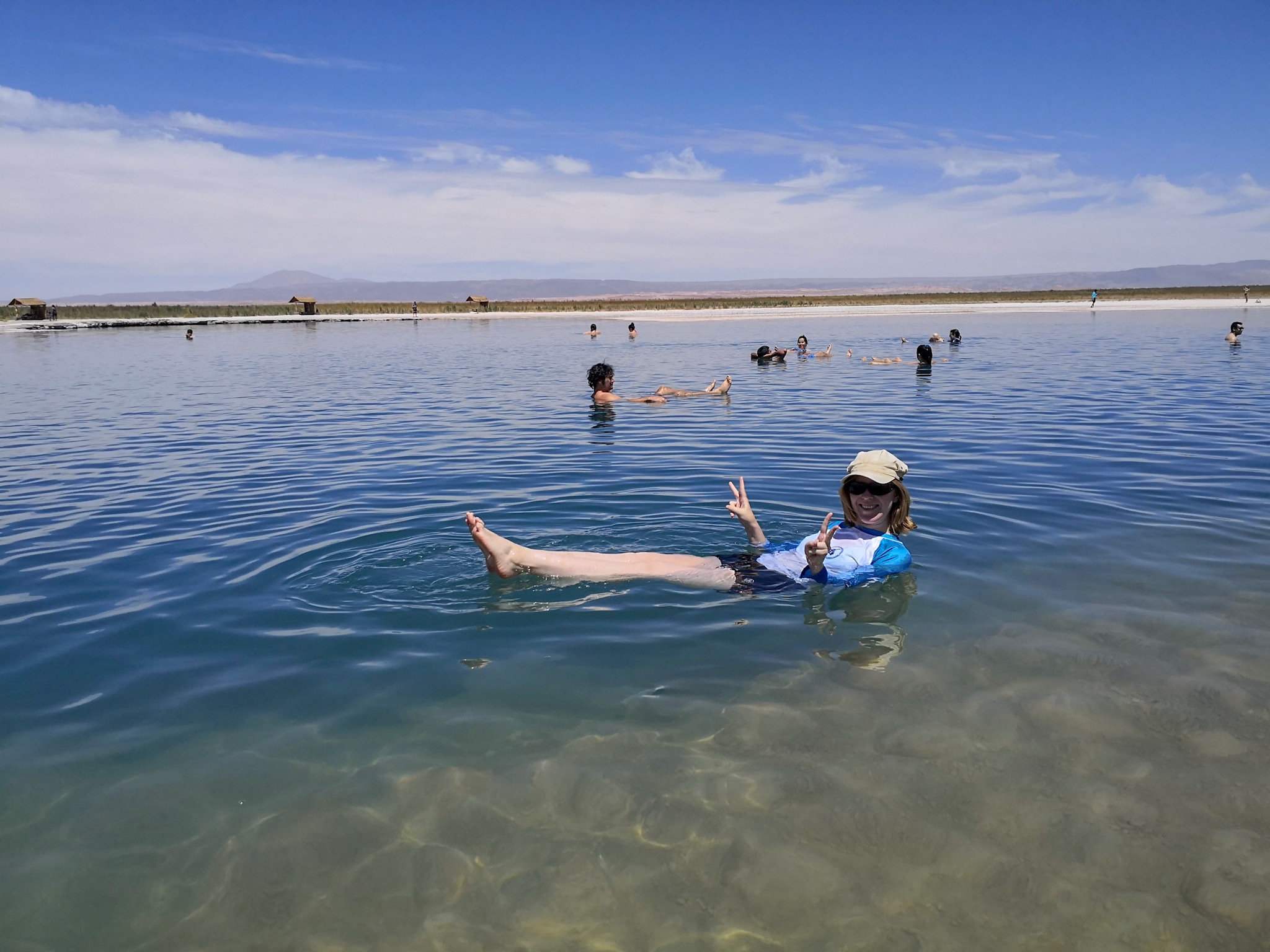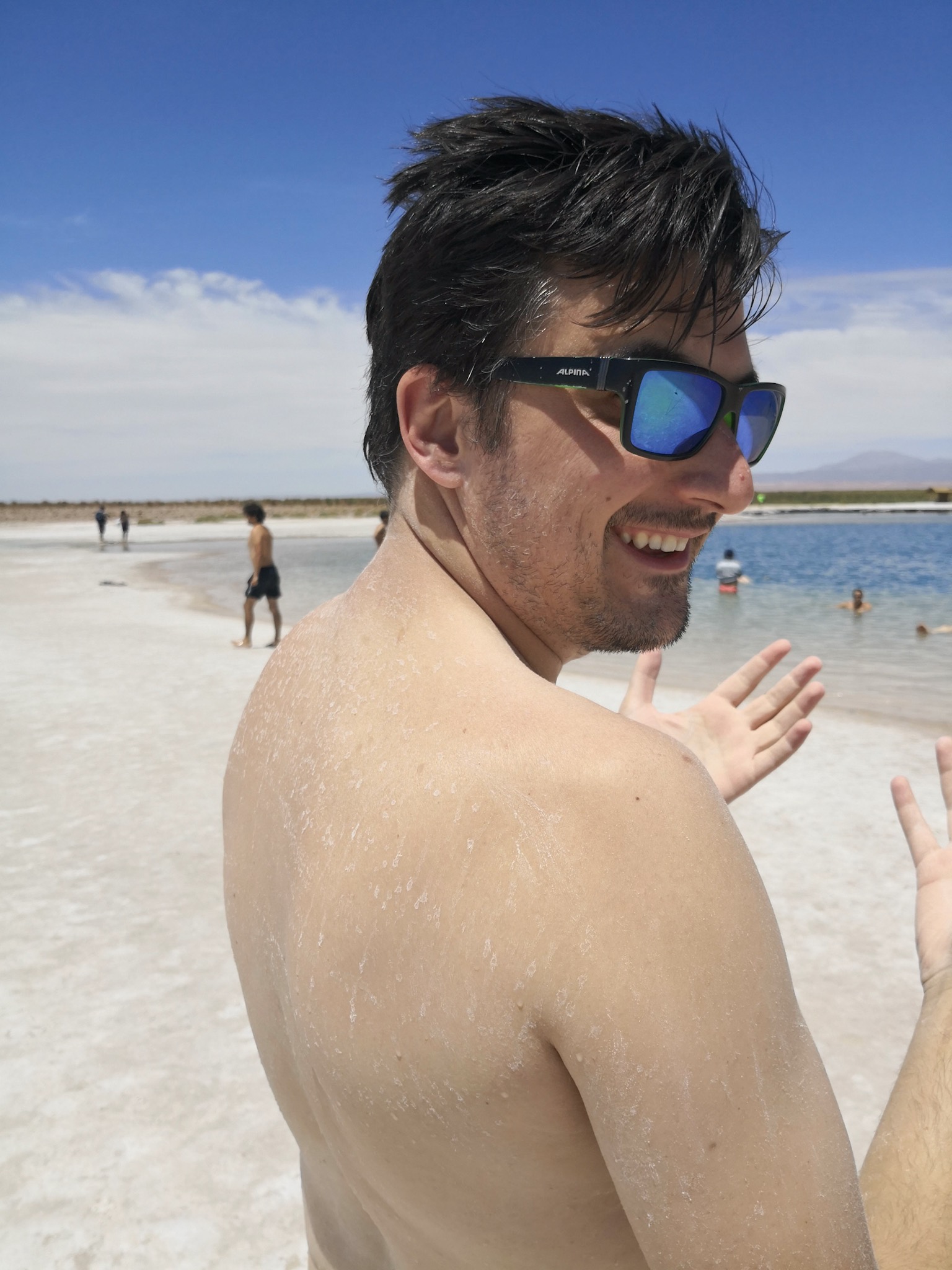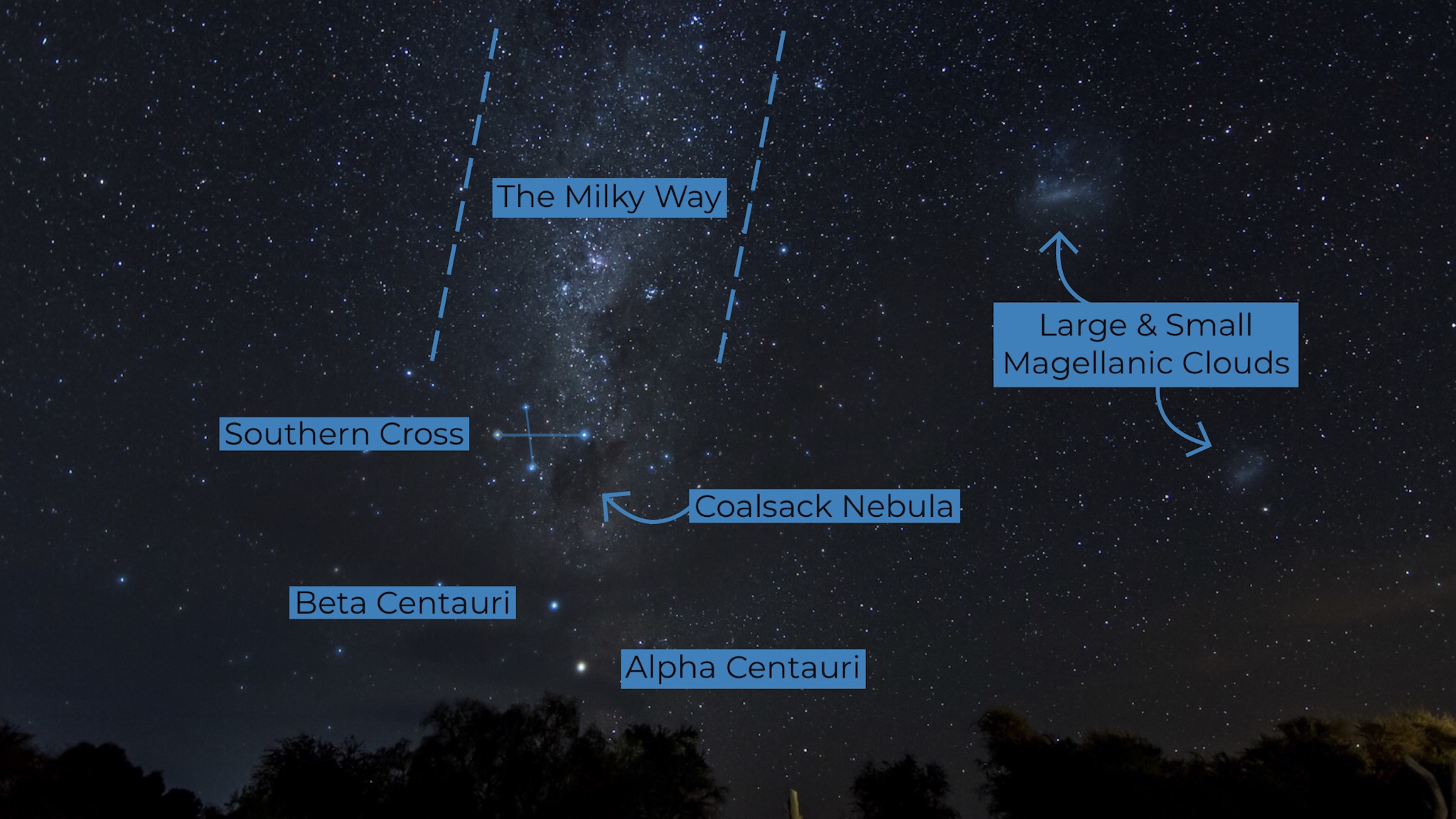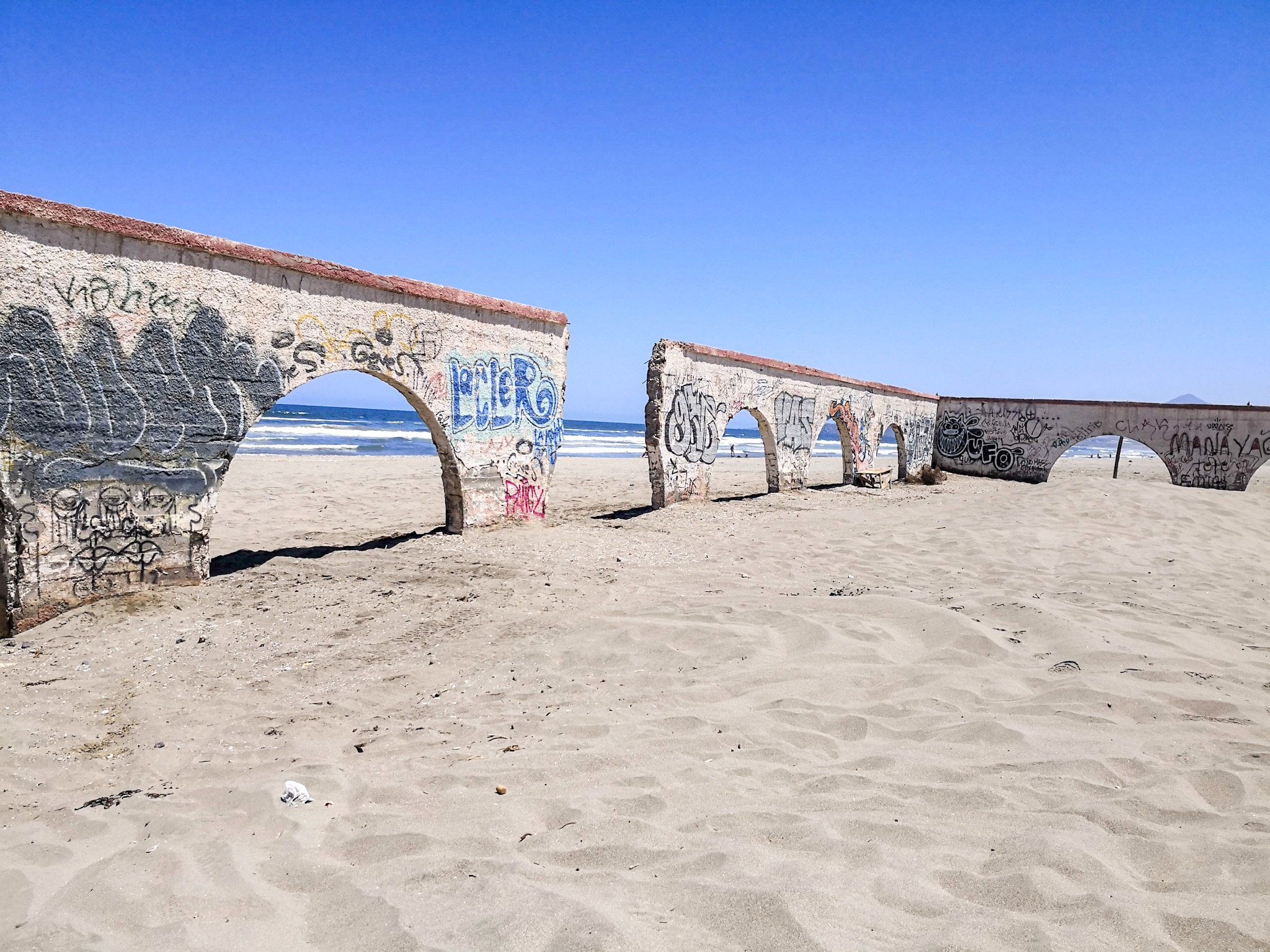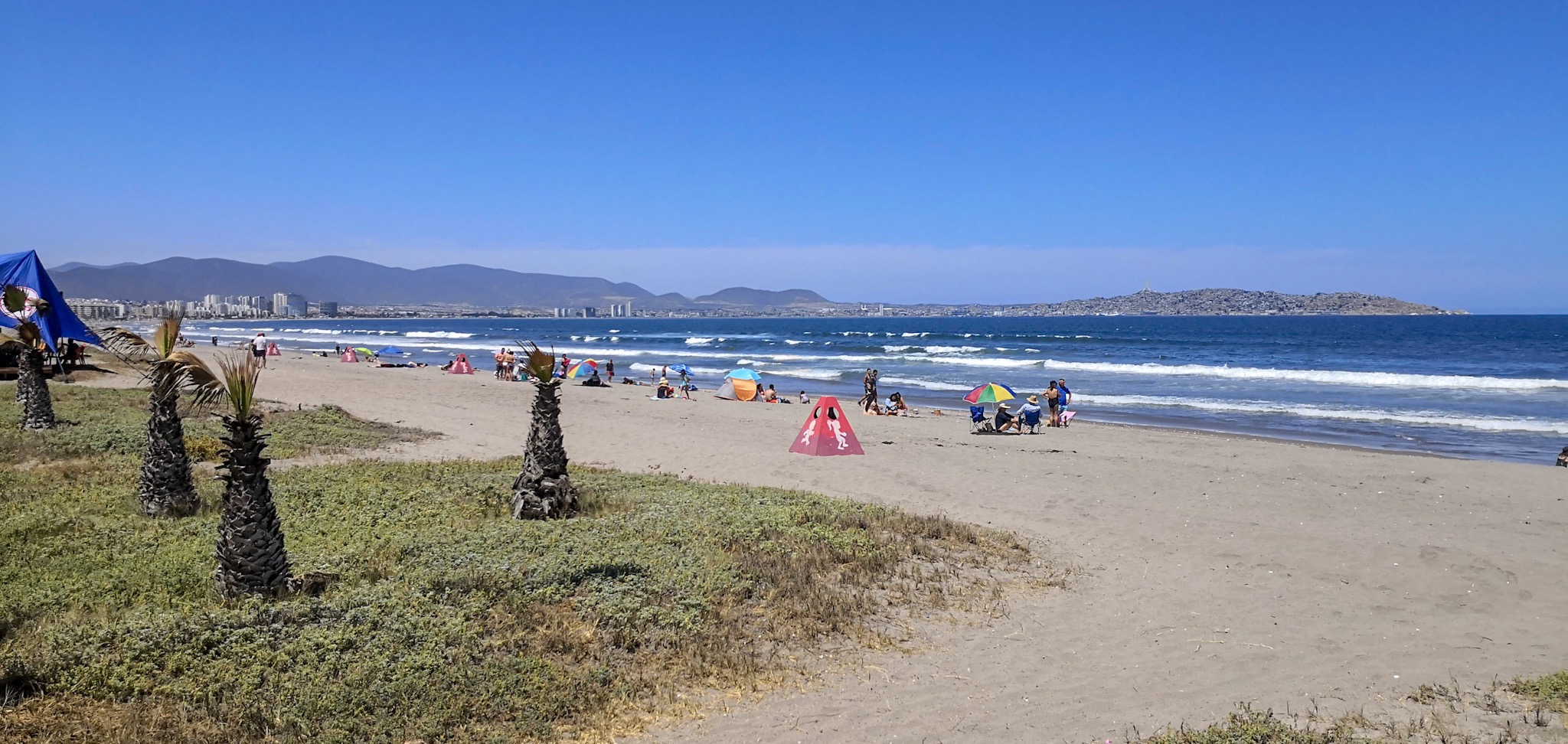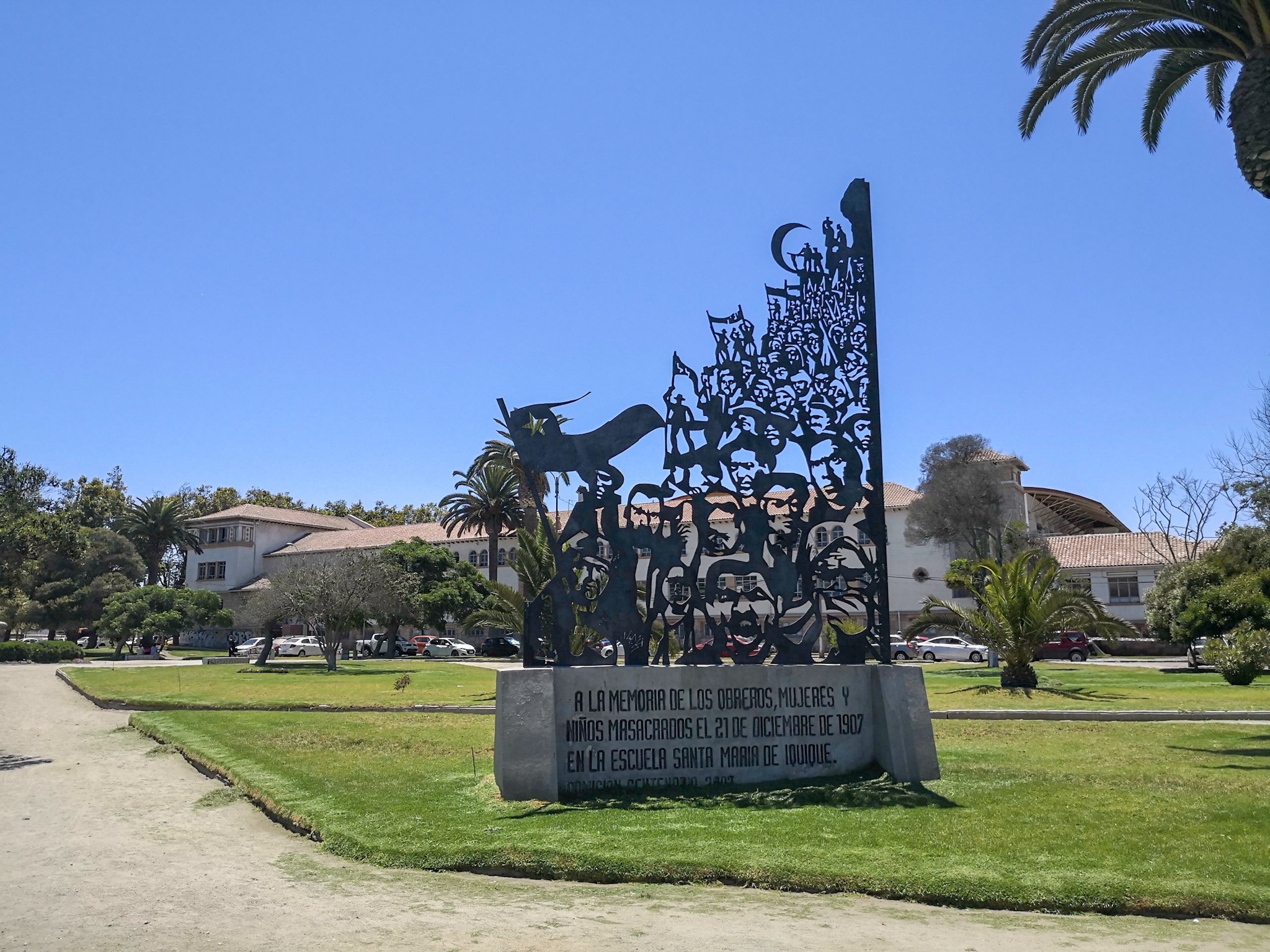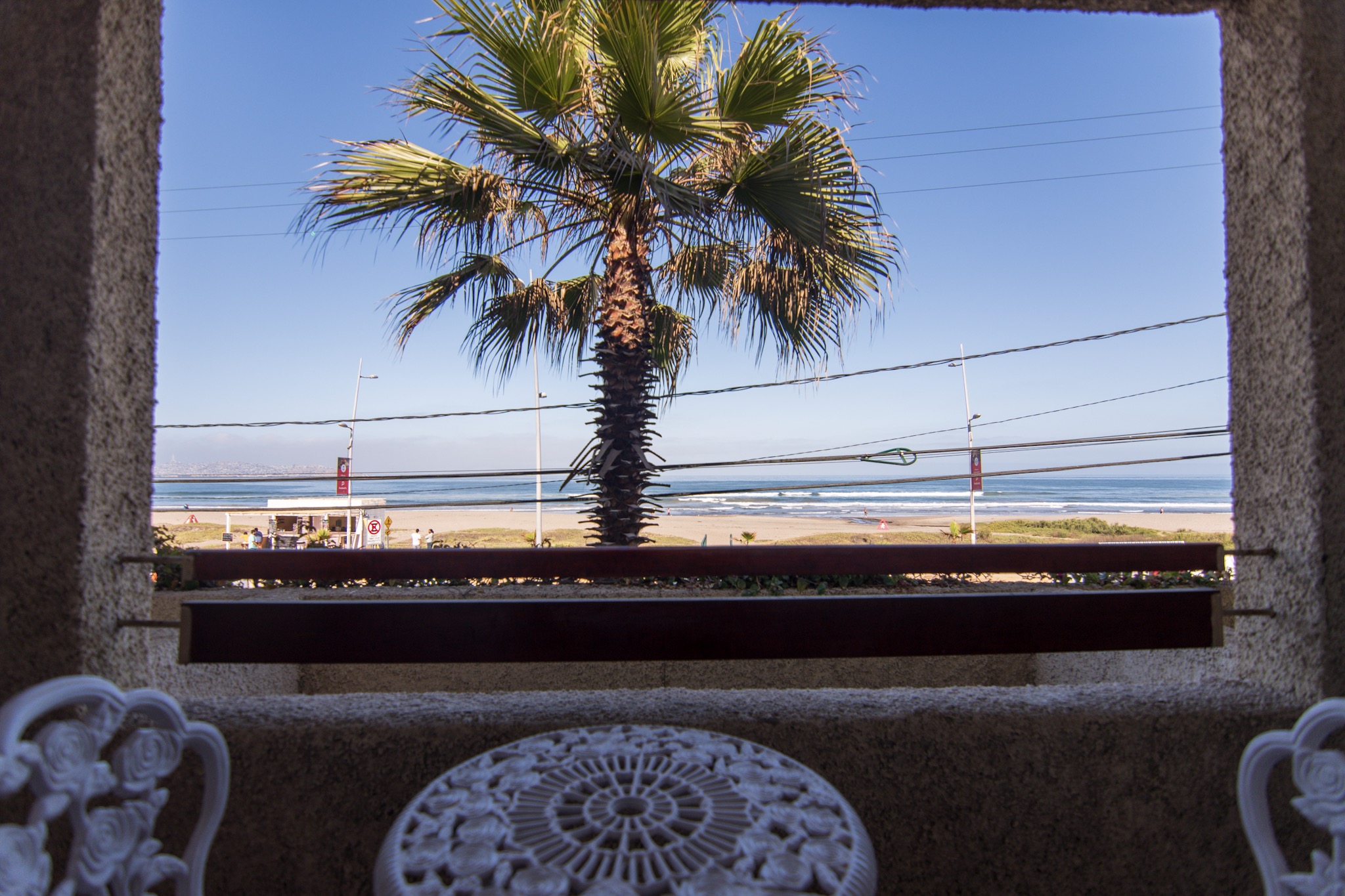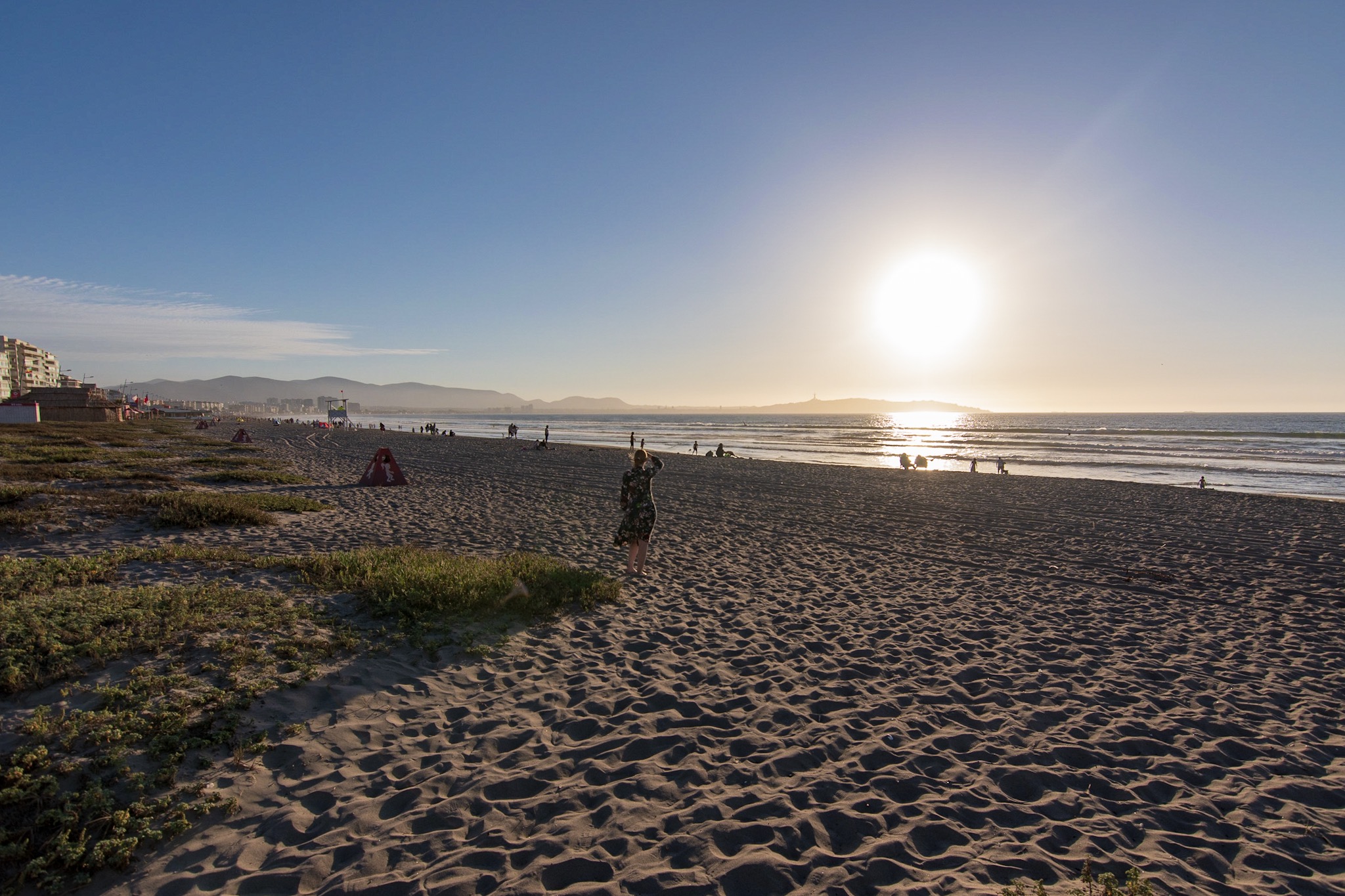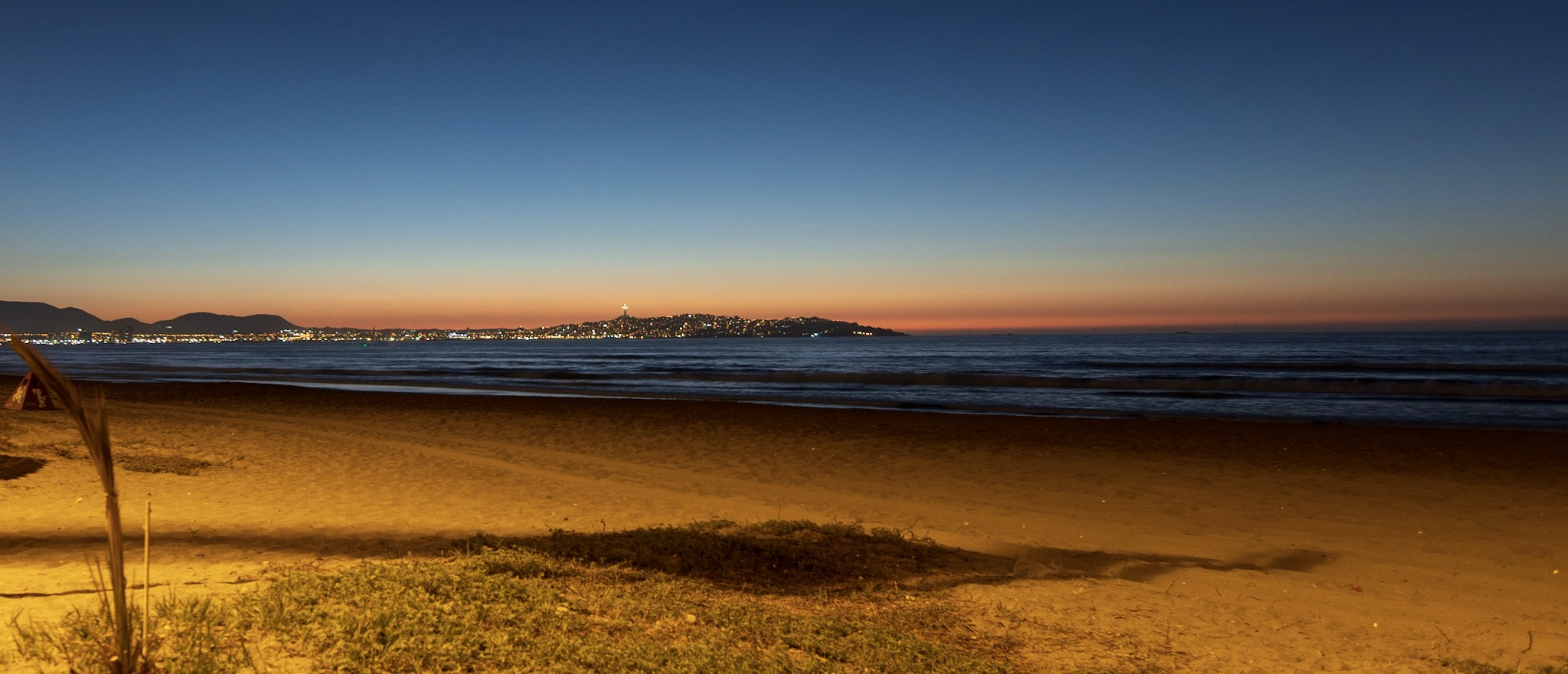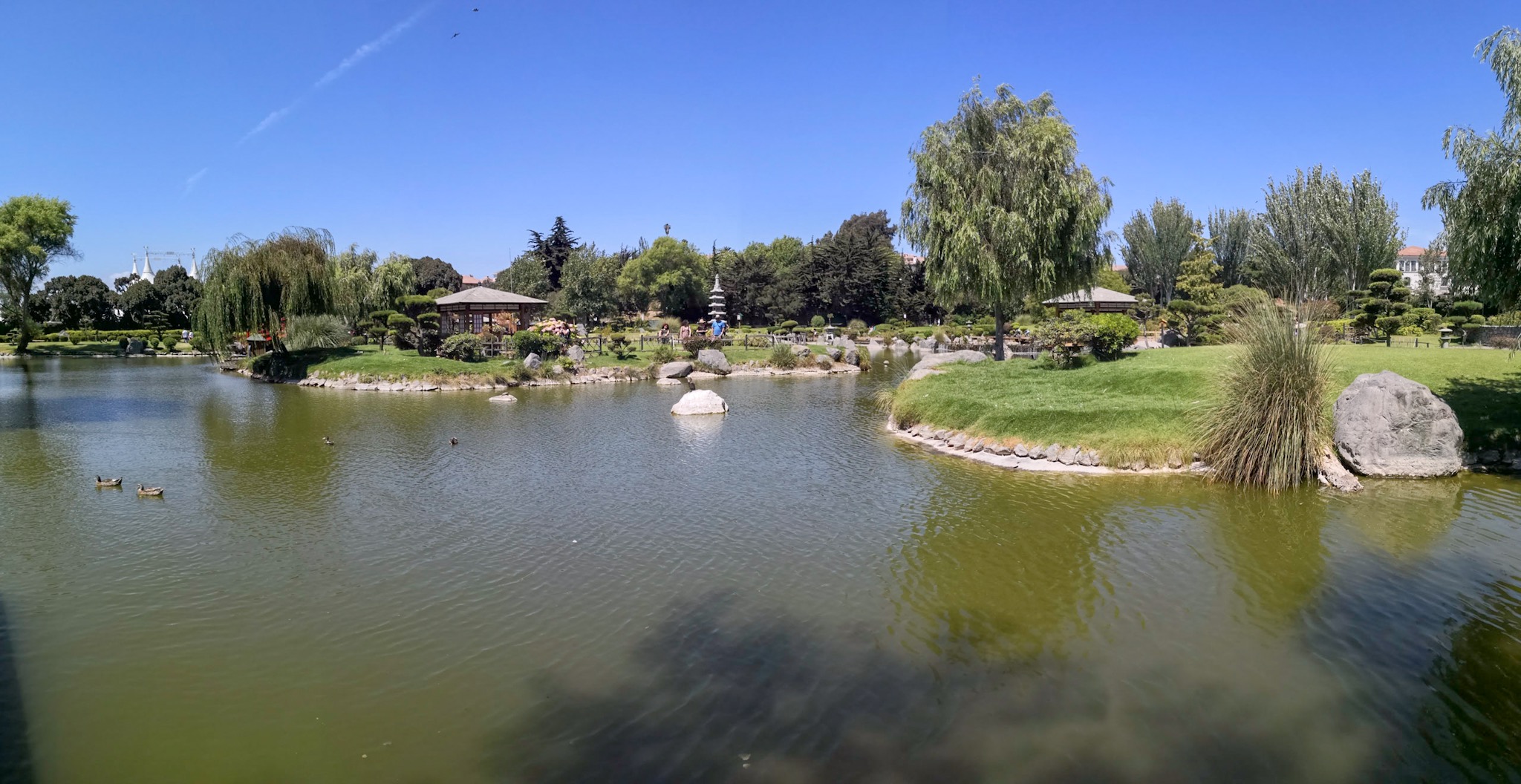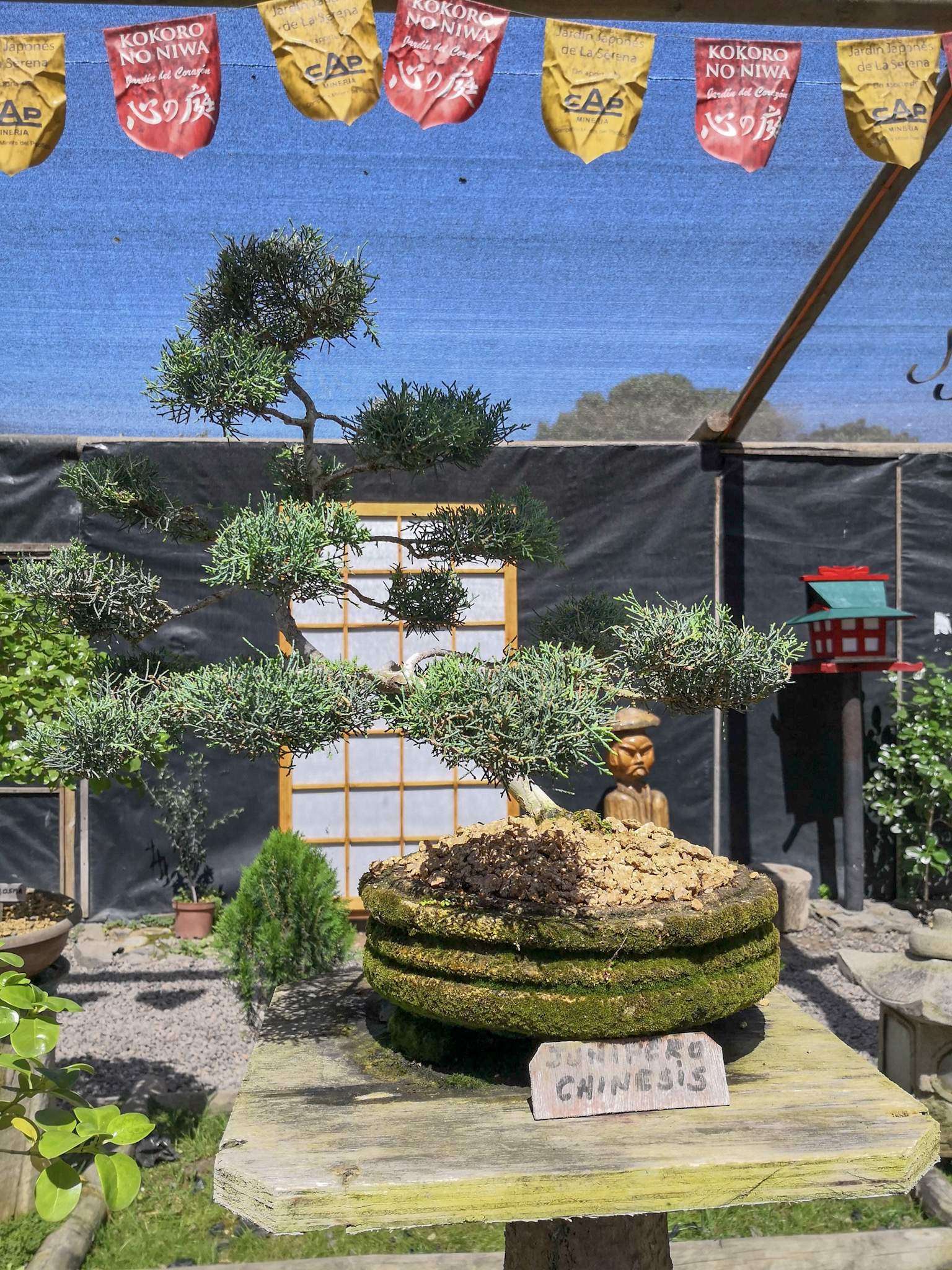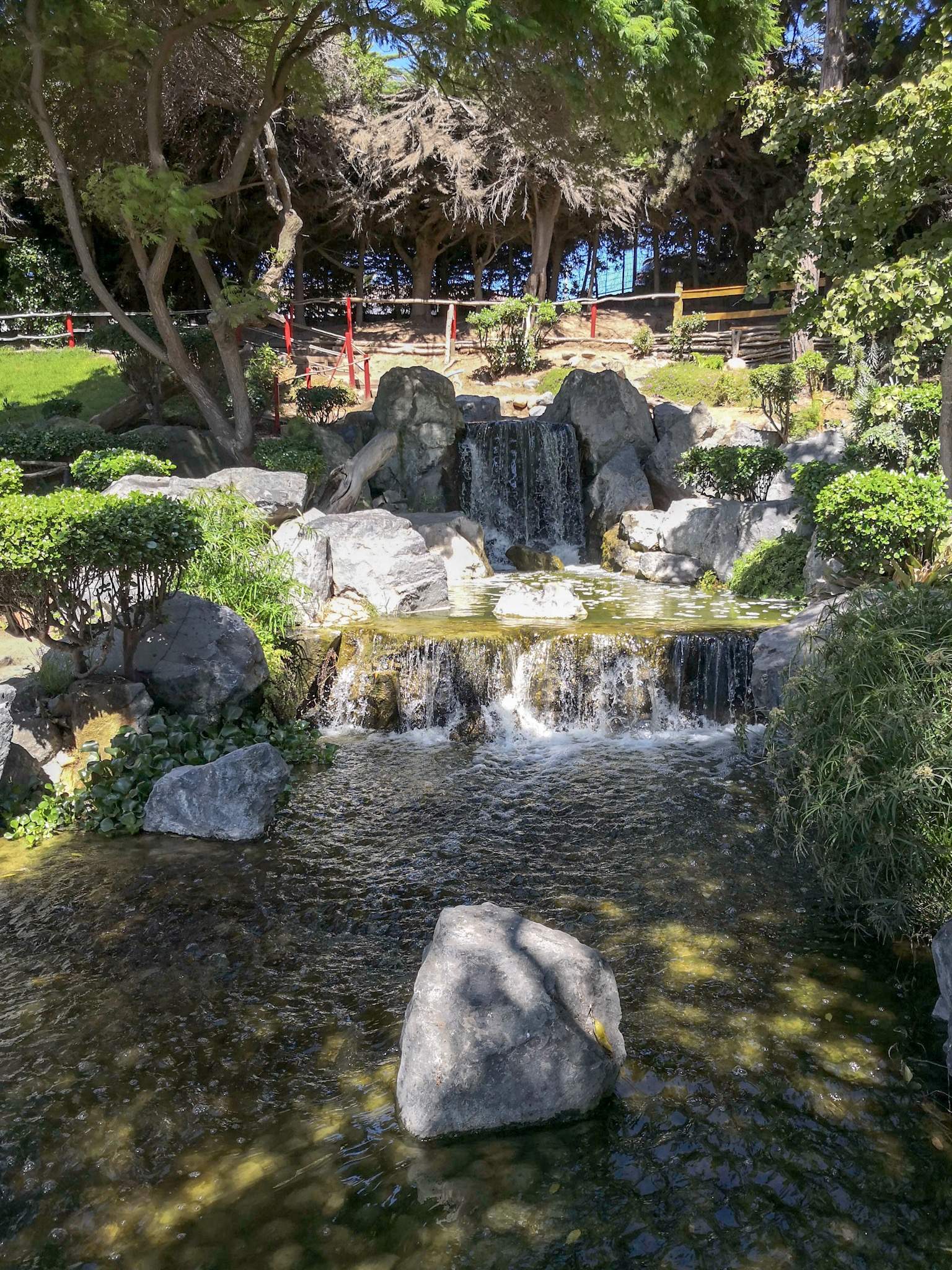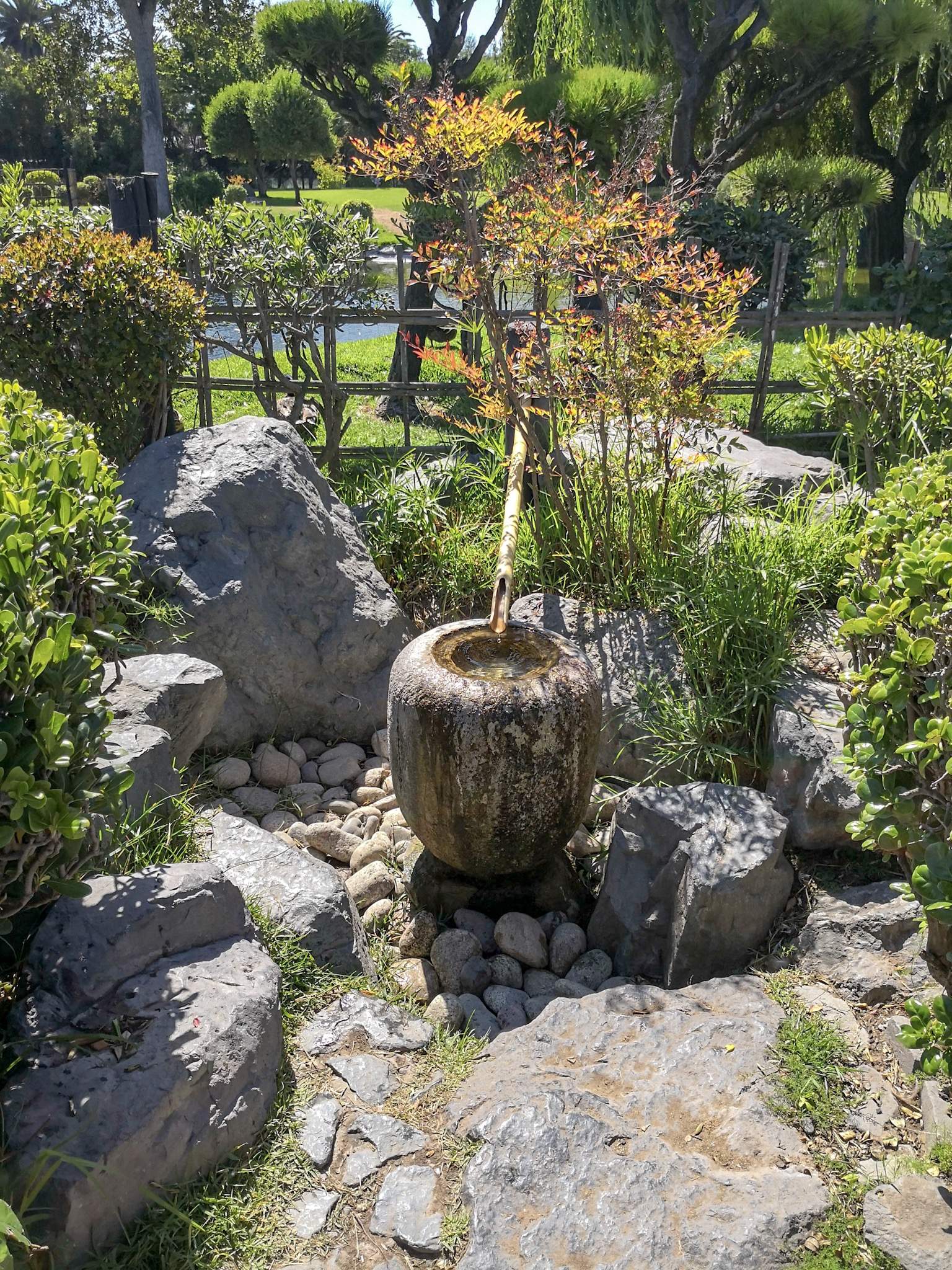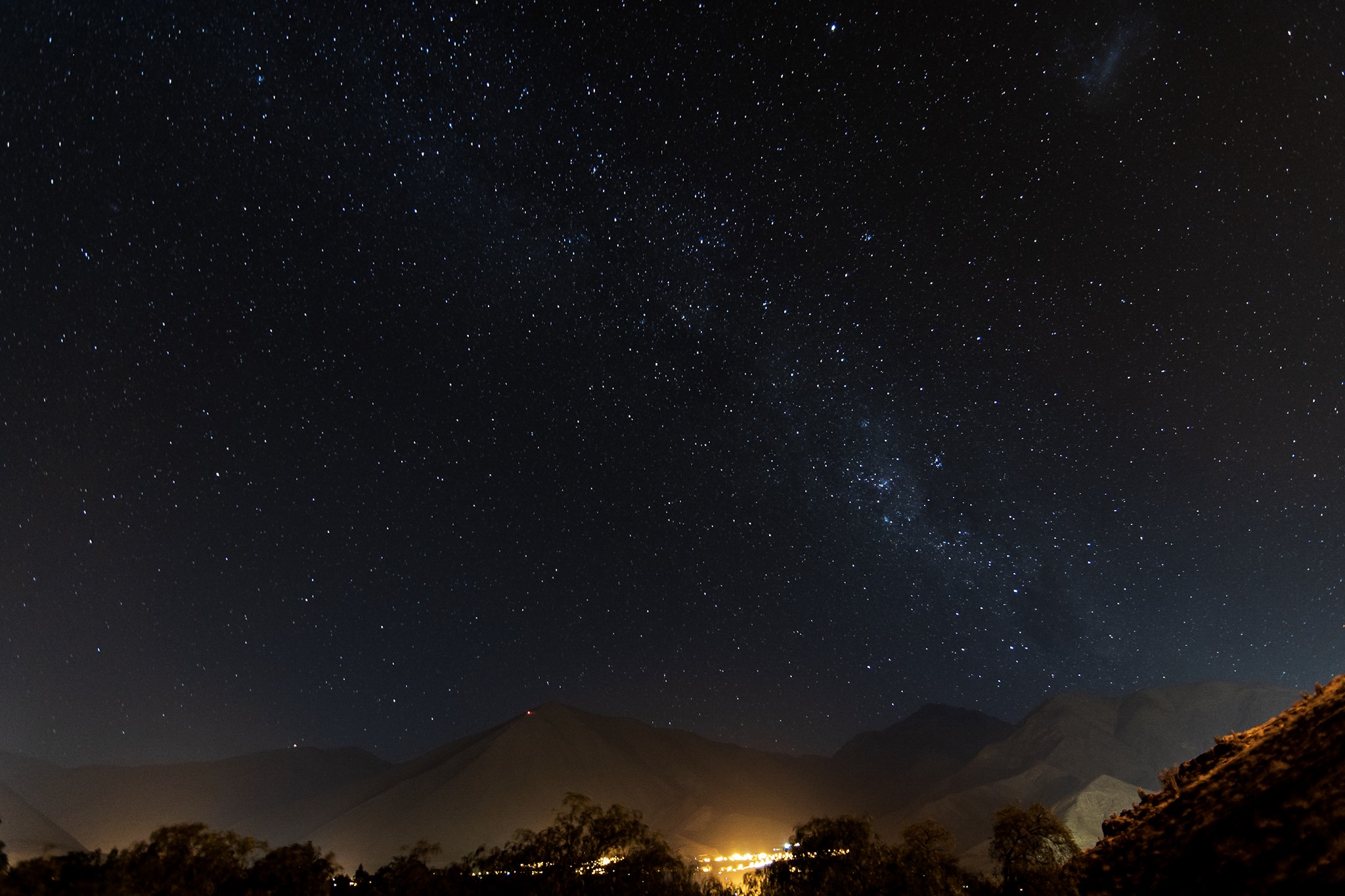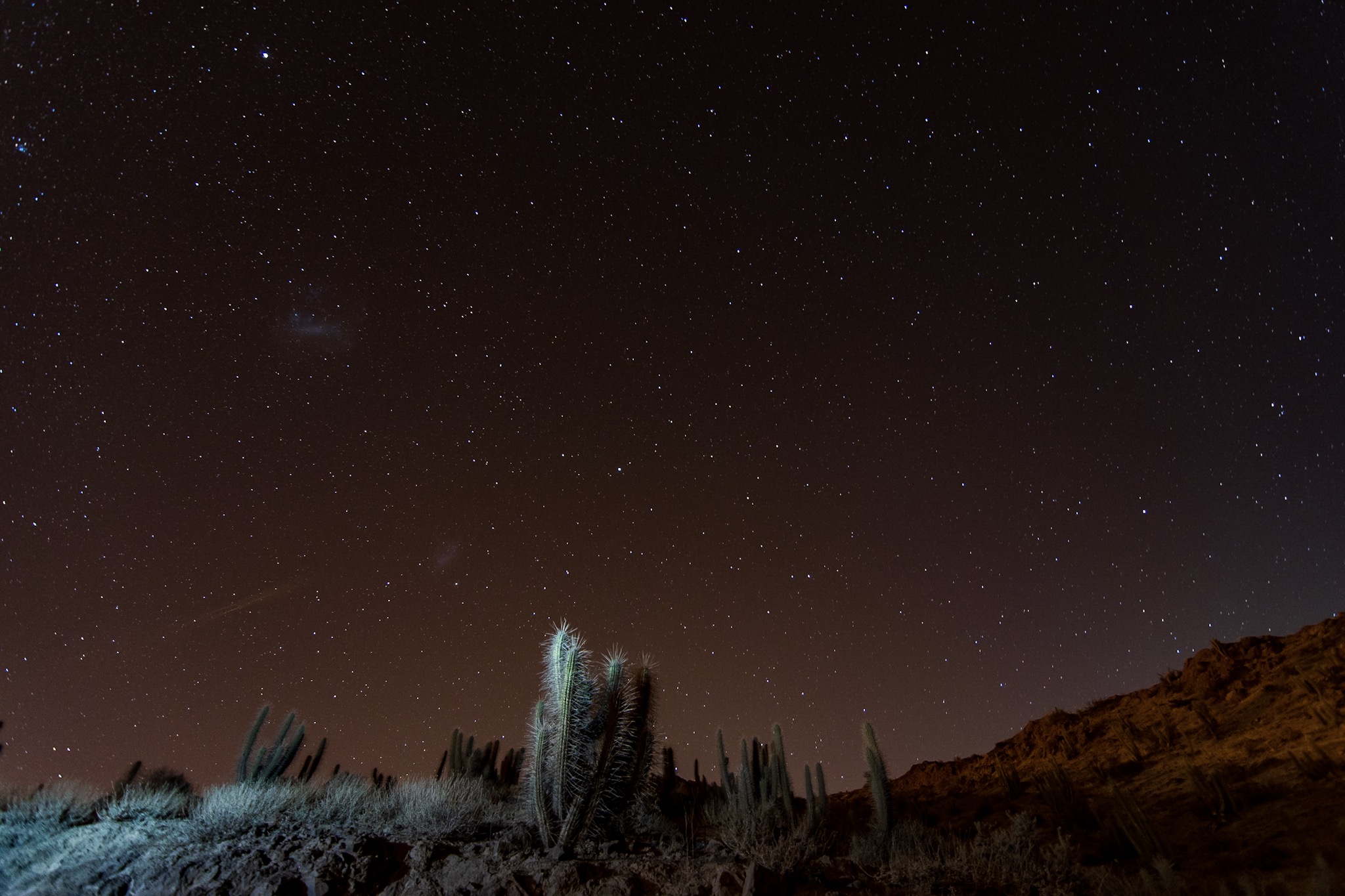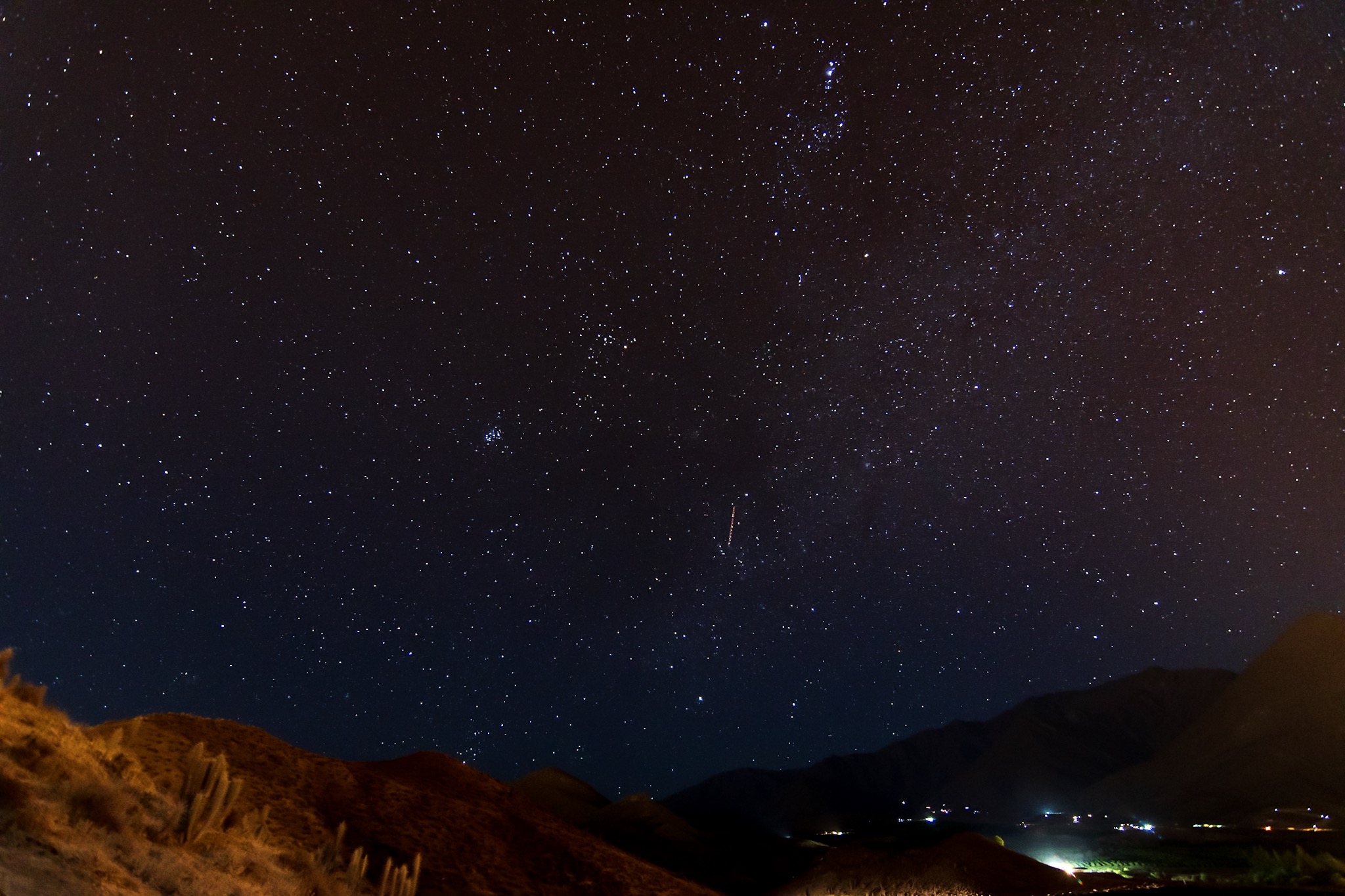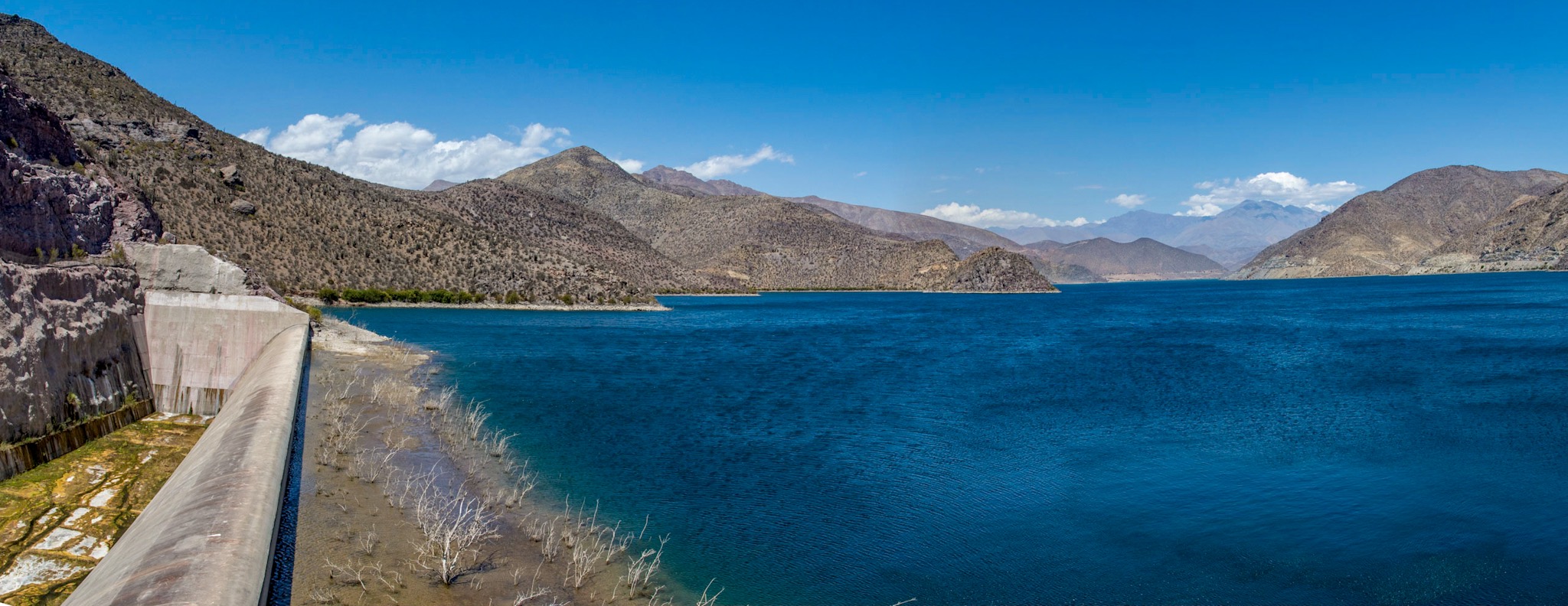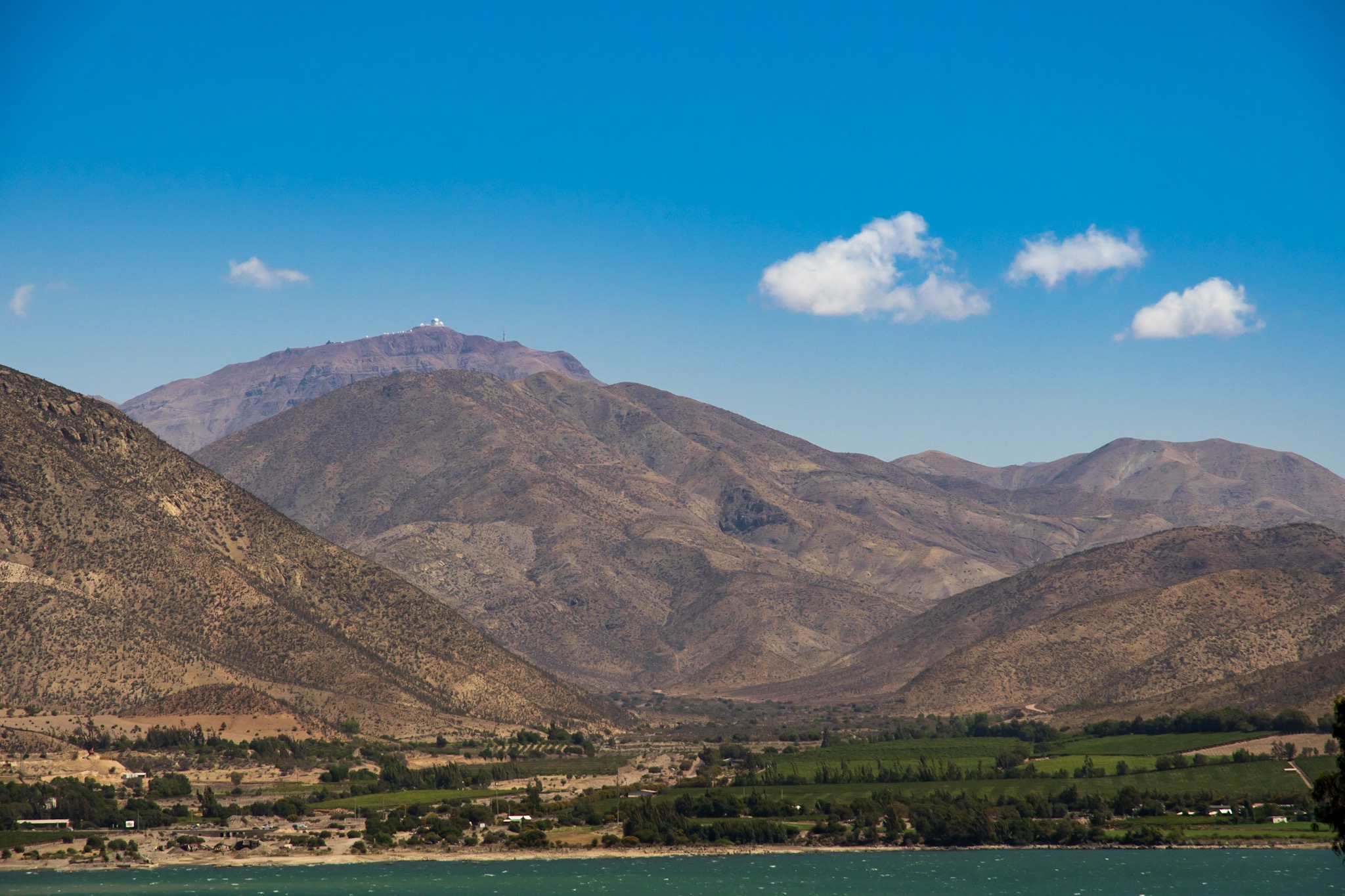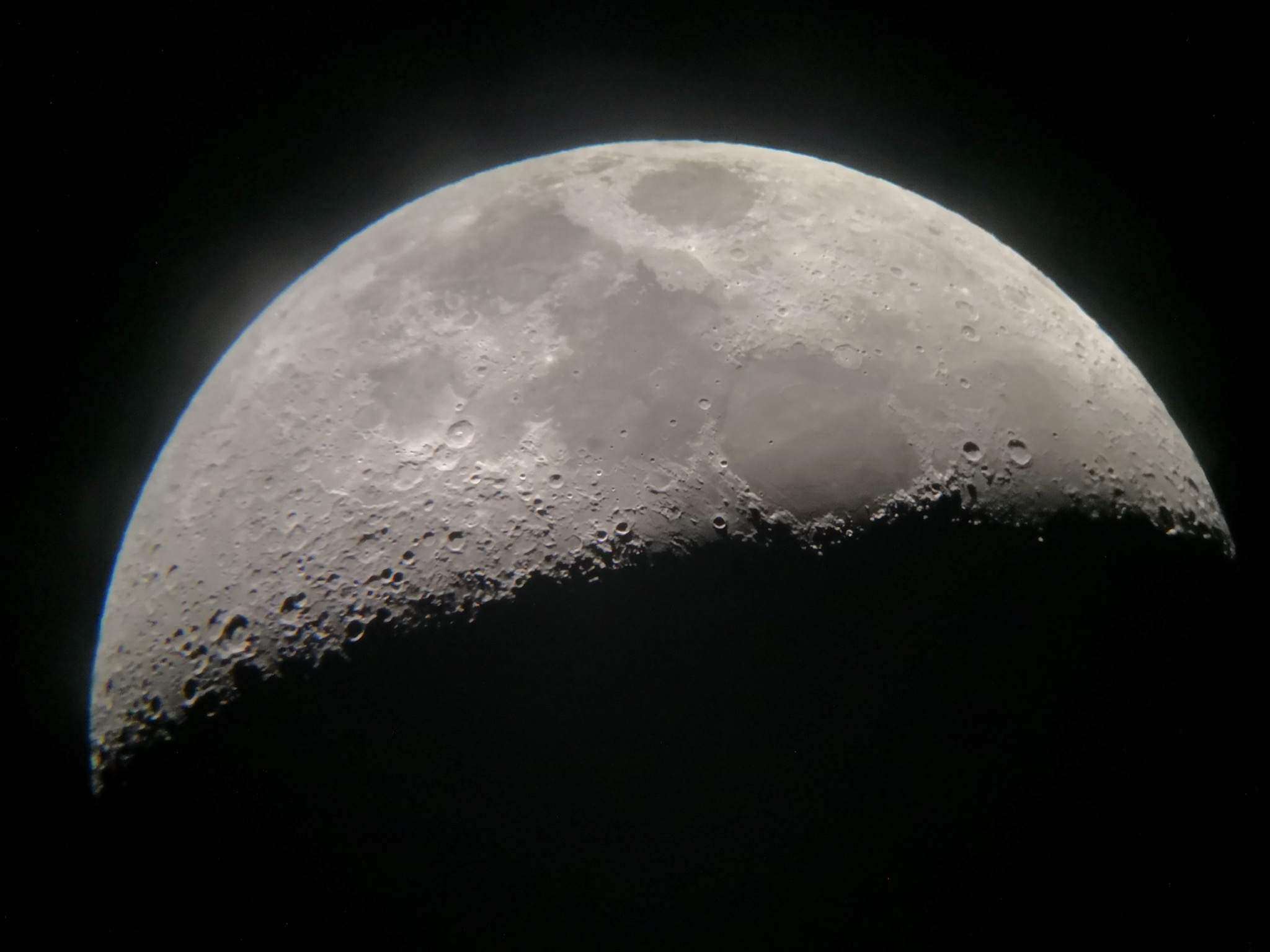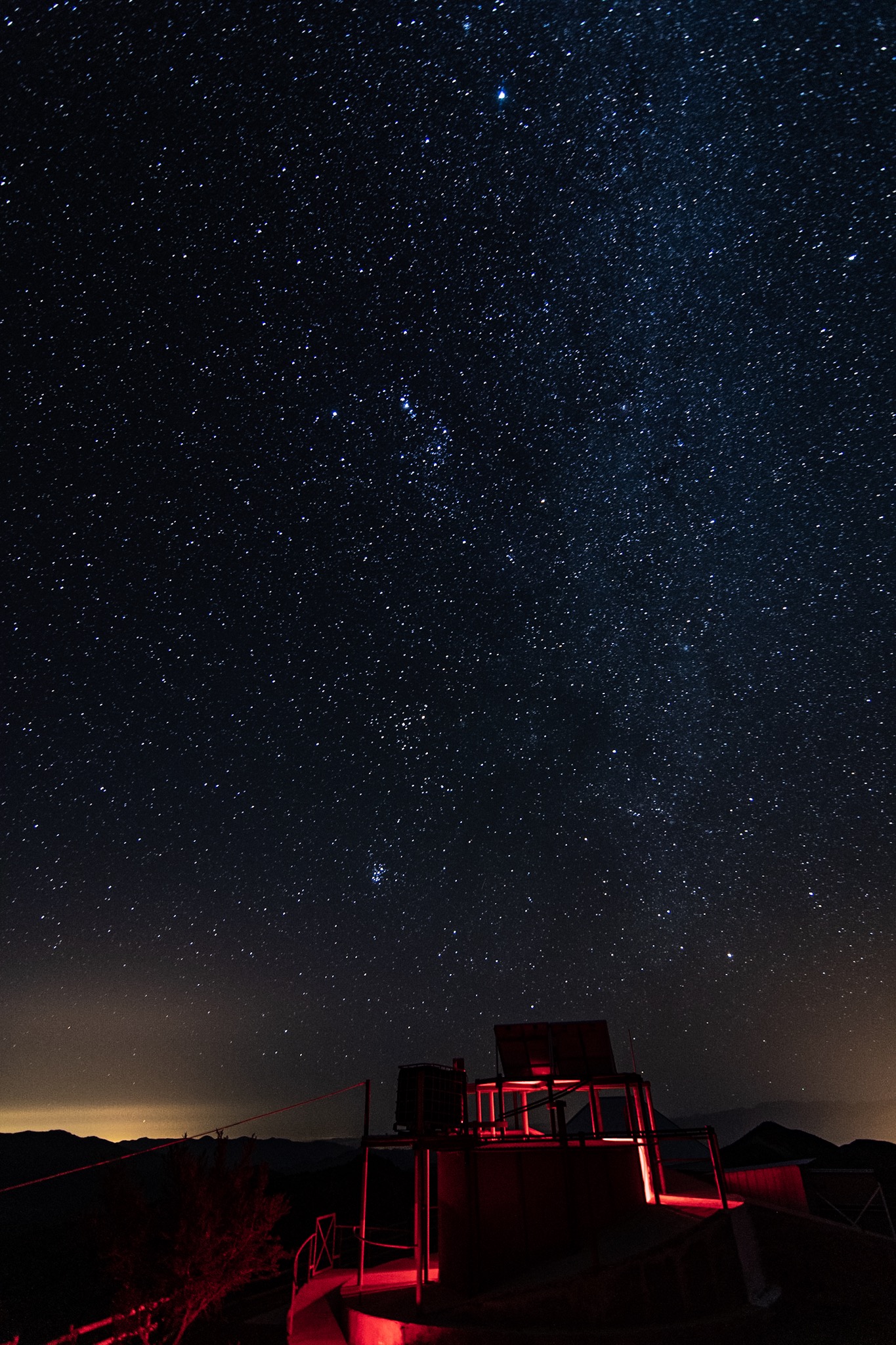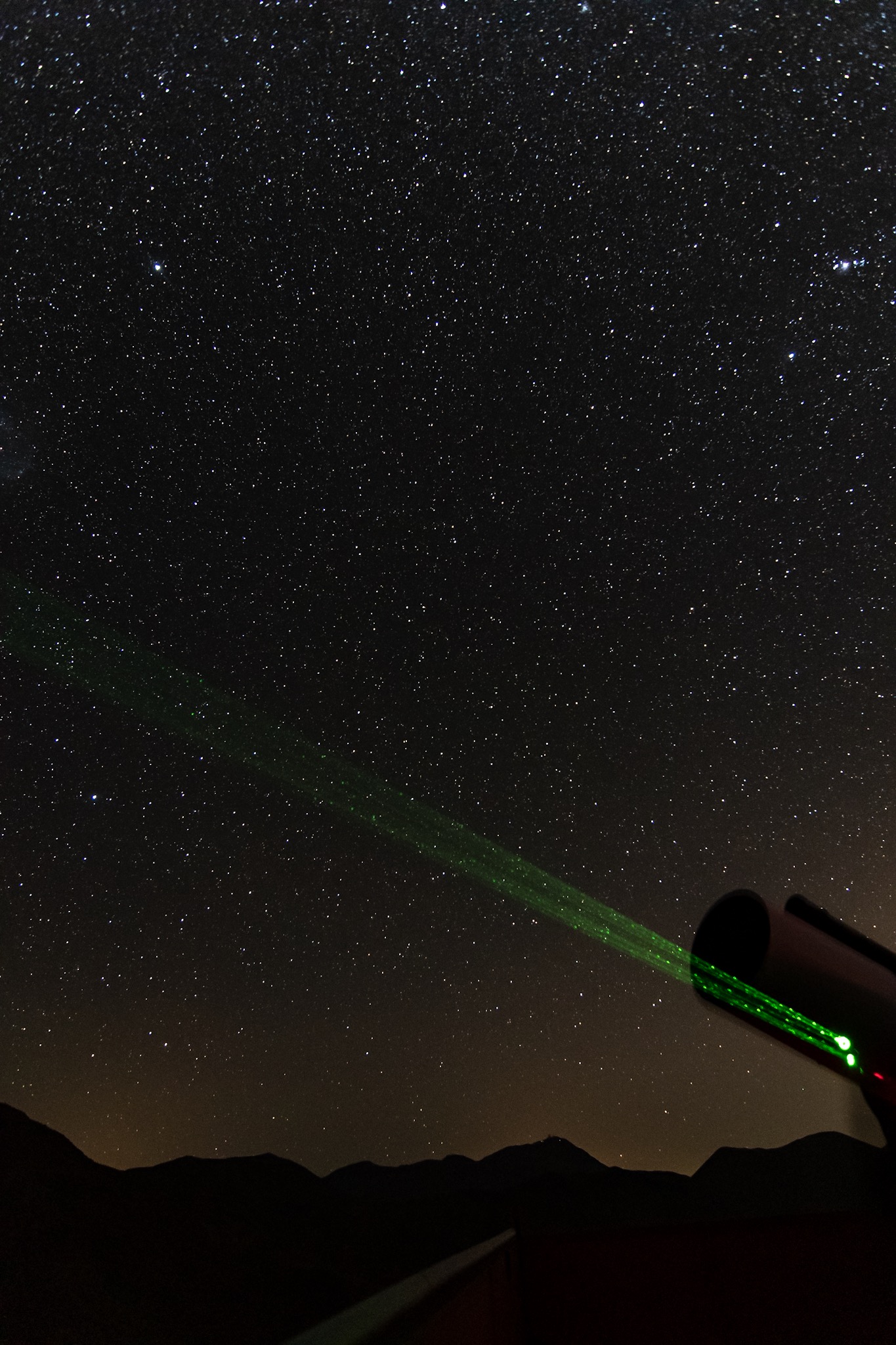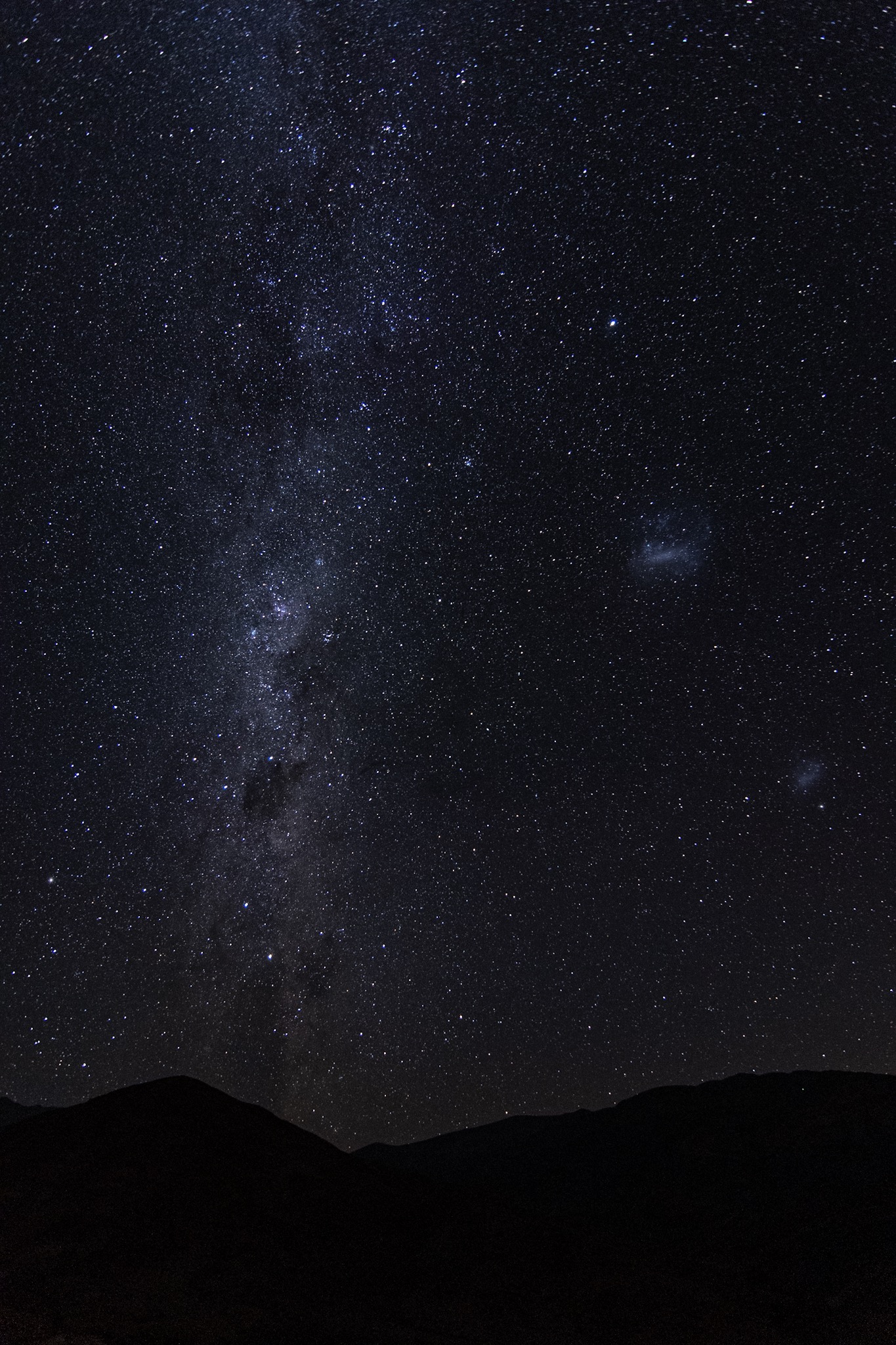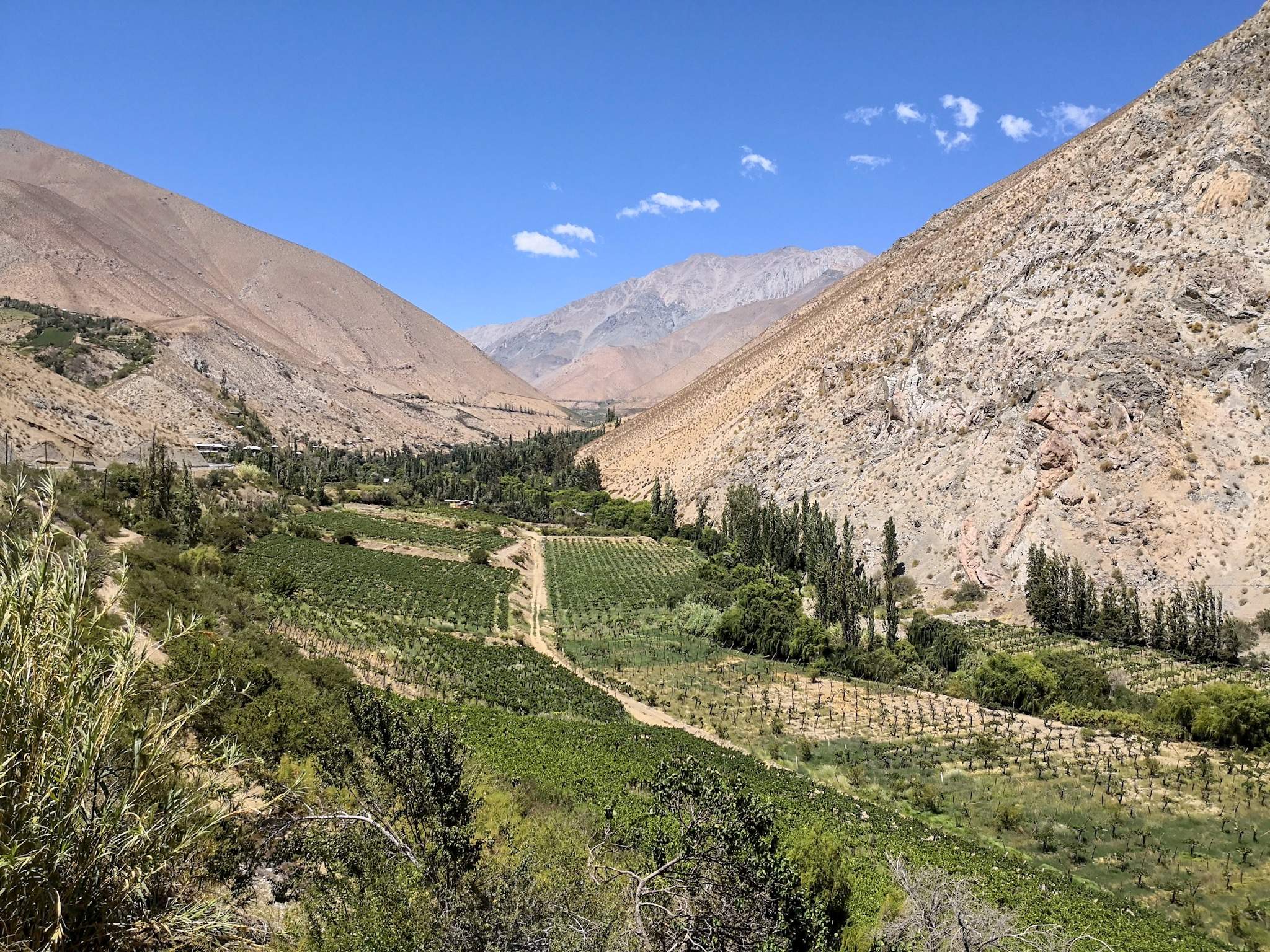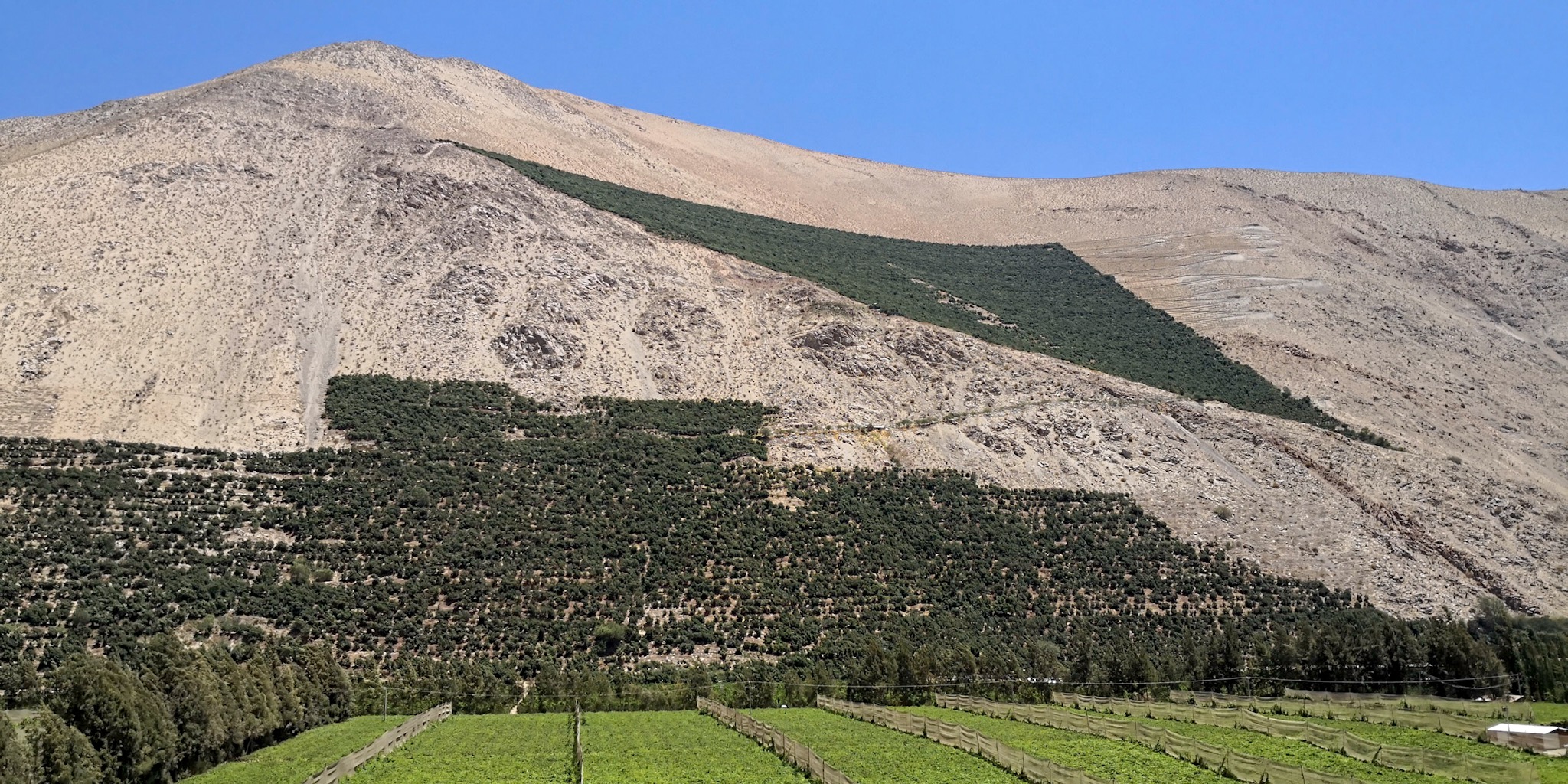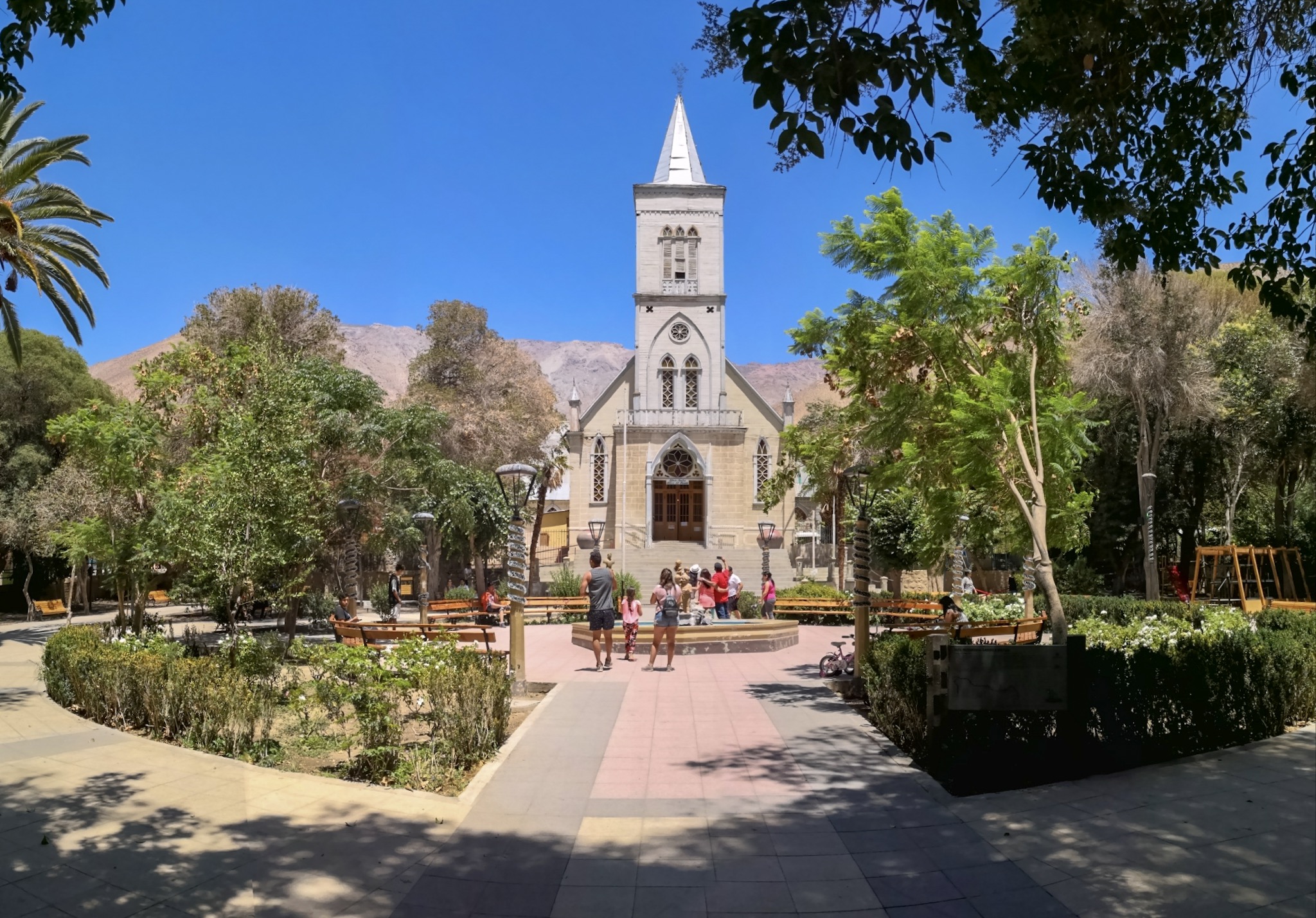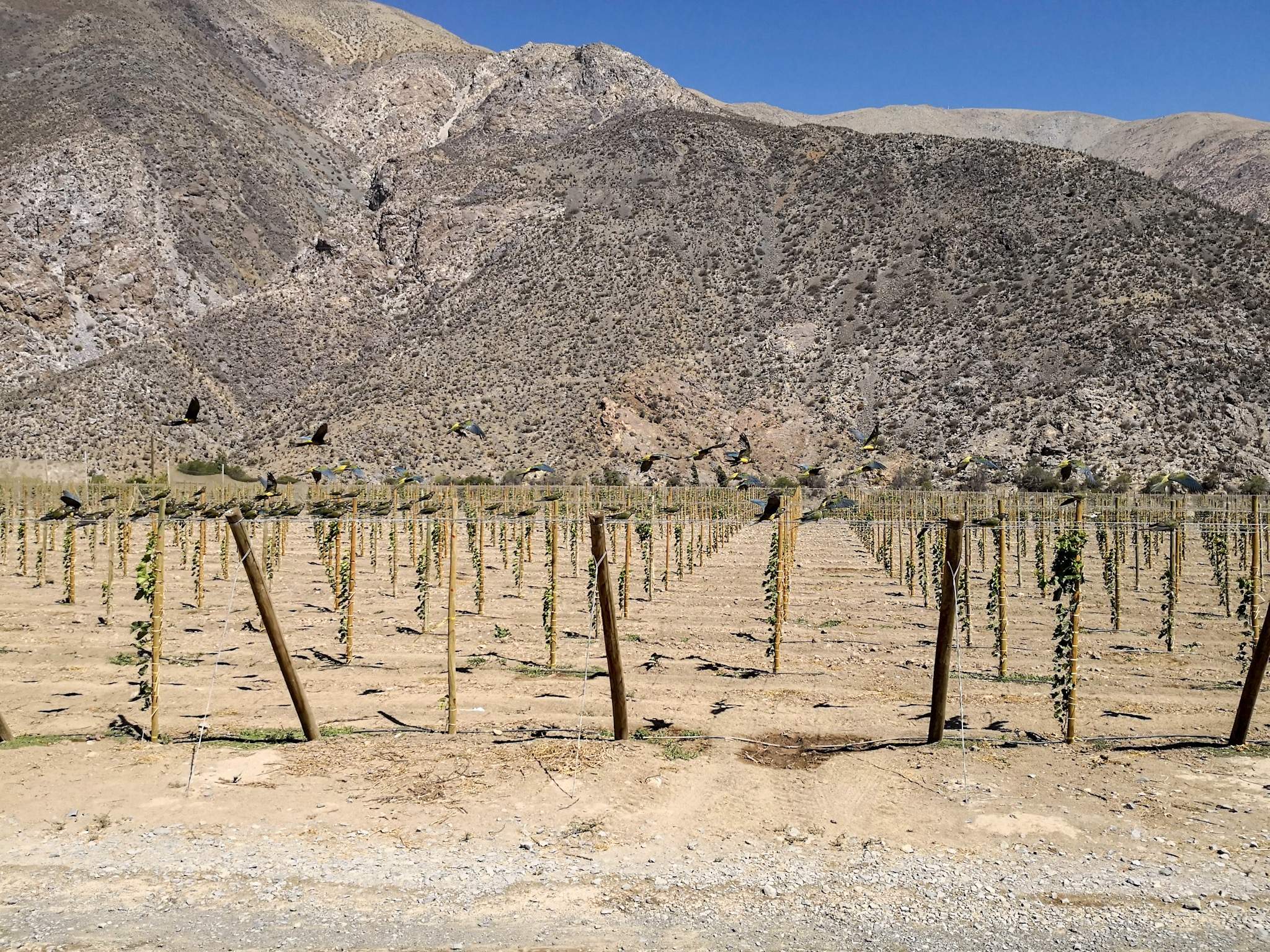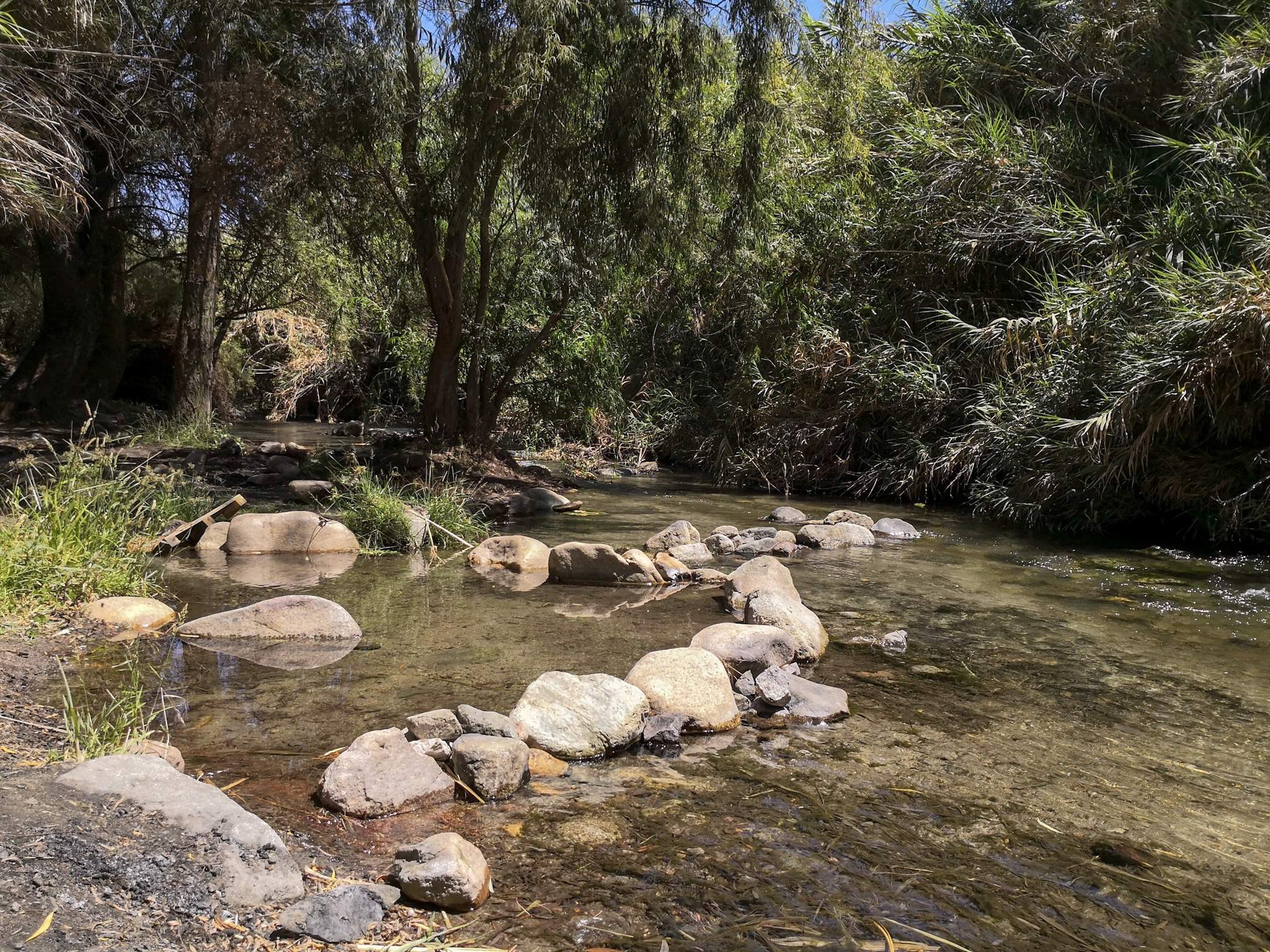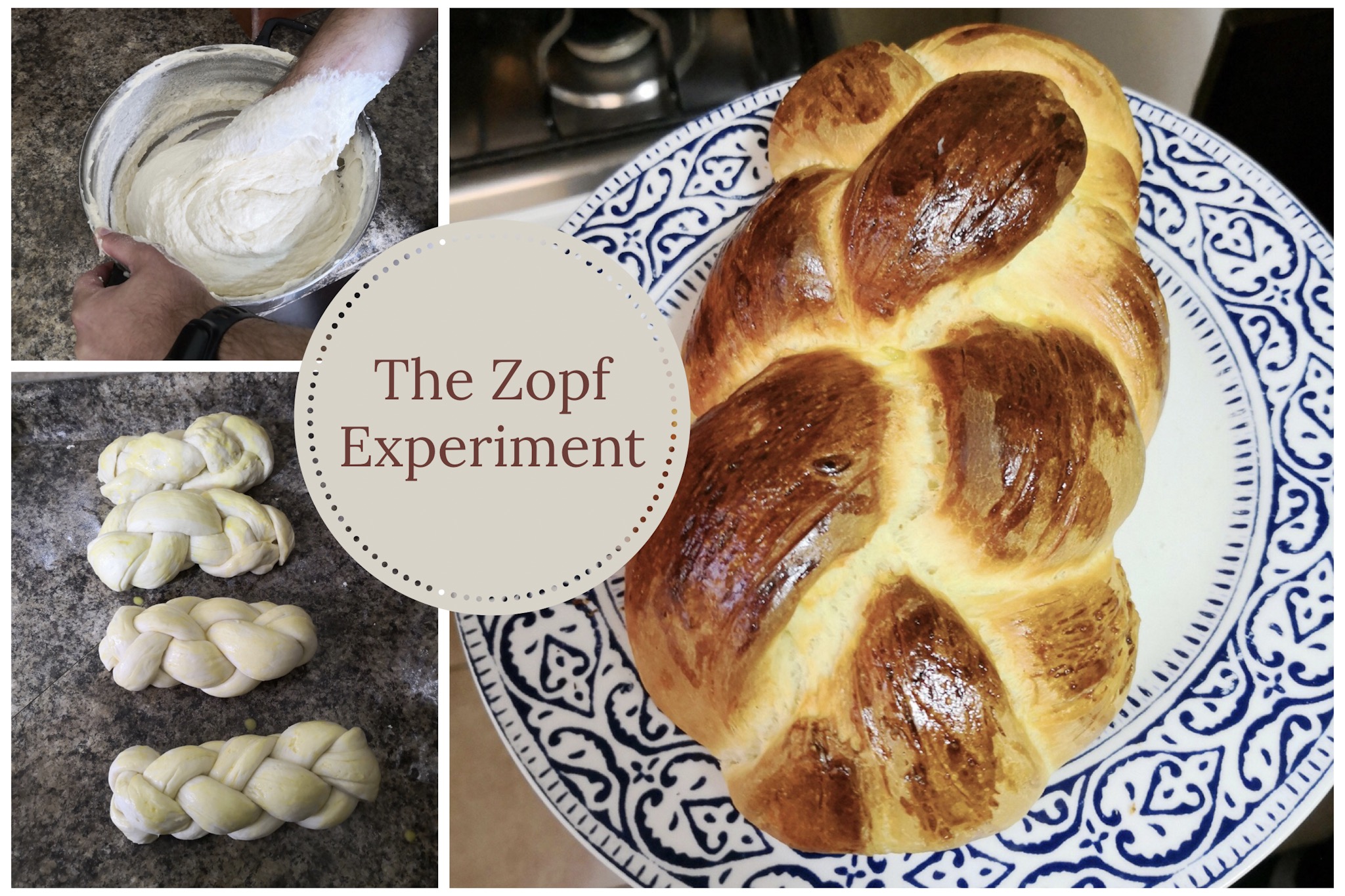Sand, Stars and a Decision
Unsere Tour durch die Salar de Uyuni endete an der Bolivianischen Grenze zu Chile, in Hito Cajon. Die Einreise nach Chile war schon etwas speziell. Am Ausgang von Bolivien wurde uns vom grimmigen Personal in einer kleinen gelben Hütte ein Stempel verpasst und das wars auch schon. Danach fuhren wir mit einem neuen Nissan Combi zur modernen Chilenischen Zollstelle, bekamen zwei Einreiseformulare zum Ausfüllen überreicht und erhielten genaue Instruktionen: zuerst nur mit dem Pass zur Grenzwache, Stempel holen, danach Gepäck schnappen und mit Einreiseformular zur Kontrolle: kein Gemüse, keine Früchte, kein Honig, kein Fleisch und keine Milchprodukte. Wieso das so ist, erklären wir euch im nächsten Beitrag.
Erfolgreich (oder eher erfolglos?) untersucht durften wir auch schon nach nur einer Stunde einreisen und fuhren auf einer schönen neuen Strasse Richtung San Pedro de Atacama.
The Salar de Uyuni tour ended at the Bolivian border to Chile in Hito Cajon. Our exit was rather unspectacular. We were given a stamp by the grim staff in the little yellow hut and that's it. Then we drove , with a new Nissan Combi, to the modern Chilean customs office. We got two forms to fill in and received precise instructions: first just take the passport to the border guards, pick up the stamp, then grab your luggage with the forms for the control: no vegetables, no fruits, no honey, no meat and no dairy products. We'll explain why in our next blog entry.
Successfully (or rather unsuccessfully?) searched, we were allowed to enter after only one hour and drove on a beautiful new road towards San Pedro de Atacama.
Burn, Baby, Burn!
Nach dem letzten doch eher kalten Monat in Bolivien wurden wir freundlich von der Wüstenhitze empfangen. Unsere Daunenjacken und Mützen tauschten wir gegen Shorts und T-Shirts ein und Flip-Flops mussten her. Neben dem Wetter war auch das Touristen Verhältnis auf den Kopf gestellt. Wir hatten das Gefühl, San Pedro wurde nur für Touristen aufgebaut. Irgendwie verständlich, rundherum gibt es so viel anzuschauen und zu erleben.
Brutal waren neben der Hitze vor allem die Preise, alles war gefühlt dreimal so teuer wie in Bolivien :( Wir wussten zwar schon dass Chile teurer wird, dass es aber so ein krasser Unterschied ist war uns leider nicht bewusst. Wenigstens war aber das Bier viiiiel besser.
After the last rather cold month in Bolivia we were warmly welcomed by the desert heat. We exchanged our down jackets and beanies for shorts and t-shirts and of course flip-flops. In addition to the weather, the tourist relationship was turned upside down. We had the feeling that San Pedro was built just for tourists. Somehow understandable as there is so much to see and do all around it.
Additionally to the heat we were blown away by the high prices, everything was literally three times as expensive as in Bolivia :( Although we knew that Chile is more expensive, we didn't think it would be that of a stark difference… At least the beer is way better.
Als erstes machten wir eine Tour zur Valle de la Luna (Tal des Mondes). Die Tour fing etwas unspektakulär an, Dani konnte vor allem nicht in die Höhle wegen ihrer Schulter. Als es dann aber zu der “Grossen Düne” ging, waren wir hin und weg von der schönen Landschaft! Der Sonnenuntergang näherte sich und wir fuhren zu einem Aussichtspunkt mit super Panorama.
First we did a tour to the Valle de la Luna (Valley of the Moon). The tour started somewhat unspectacular, especially since Dani could not go in the cave because of her shoulder. But by the time we got to the “great dune”, we were blown away by the beautiful landscape! The sunset approached and we drove to a vantage point with a great panorama.
Am nächsten Tag entschieden wir die Salzlagunen Cejar und Piedra zu besuchen. In ersterer konnten wir Flamingos beobachten. In der zweiten kann man baden. Die Salzkonzentration ist etwa gleich hoch wie im Toten Meer. So kann man sich einfach treiben lassen.
War ganz cool, schade nur, dass es praktisch nirgends Schatten hat. Wenn man bedenkt, dass man in der Lagune nicht schwimmen darf, wenn man Sonnencreme benutzt. Aus diesem Grund halten sich die meisten wohl nicht an die Regeln, der Fettfilm auf dem Wasser spricht Bände.
The next day we decided to visit the salt lagoons Cejar and Piedra. In the former we were able to observe flamingos. In the second one you can bathe. The concentration of salt is about the same as in the Dead Sea. So you can just let yourself float away.
Was quite cool, just a pity that there’s practically nowhere shade. Considering that you can't swim in the lagoon if you use sunscreen. That's probably why most people do not adhere to the rules. The fat film on the water speaks volumes.
In der Nacht machten wir eine Astro-Tour in der Nähe von San Pedro, wo wir durch ein Teleskop verschiedene Sterne, Nebulas, Galaxien, Cluster etc. bestaunen konnten. Wusstet ihr, dass Alpha Centauri eigentlich drei Sterne sind? Oder dass das südliche Kreuz nur in der südlichen Hemisphäre sichtbar ist?
At night we did an astro tour near San Pedro, where we could marvel at different stars, nebulas, galaxies, clusters etc. with a telescope. Did you know that Alpha Centauri is actually a triple-star system? Or that the southern cross is only visible in the southern hemisphere?
Nachdem wir nun drei Touren mit einer Agentur gemacht hatten, wollten wir gerne ein bisschen auf eigene Faust unterwegs sein und den Norden Chiles und evtl. Argentiniens erforschen.
Wir versuchten ein Mietauto oder -camper zu organisieren, doch leider war nichts bezahlbares verfügbar und alle Agenturen geschlossen da Wochenende. So blieben wir etwas länger in San Pedro und versuchten unser Glück am Montag beim Büro von Wickedcamper. Diese hatten vor Ort auch nichts verfügbar, dafür aber in Patagonien, ein frisch geprüfter 3er Campervan. Nach einer kurzen Probefahrt über die holprige Wüstenstrasse waren wir überzeugt und buchten "Michael" für 5 Wochen ab Punta Arenas nach Santiago.
After we did three tours with an agency, we wanted to travel on our own and explore the north of Chile and possibly Argentina.
We tried to organise a rental car or camper, but unfortunately nothing was affordable and all agencies closed down for the weekend. So we stayed a little longer in San Pedro and tried our luck on Monday at the office of Wickedcampers. They had nothing available on the spot, but for Patagonia they had a freshly checked 3 seater campervan. After a short test drive over the bumpy desert road we were convinced and booked "Michael" for 5 weeks from Punta Arenas to Santiago.
Wir wollen Meer!
Bis zum Start des Roadtrips hatten wir noch rund eine Woche Zeit und planten das Lichtschutz- und Weingebiet "Valle del Elqui" zu erkunden.
Dieses Tal ist in der Nähe der Stadt La Serena, welche an der Küste liegt, etwa auf halbem Weg nach Santiago. Wir nahmen einen Nachtbus nach La Serena und checkten in einem Hotel an der Strandpromenade ein.
Until the start of the roadtrips we had about a week and planned to explore the light protection and winery area Valle del Elqui
This Valley is close to the city of La Serena, which is situated on the coast, about half way to Santiago. We took a night bus to La Serena and stayed in a hotel on the seafront promenade.
Wir besuchten den japanischen Garten und versuchten, eine Klinik zu finden, um Dani's Schlüsselbein kontrollieren zu lassen. Wir hatten gehofft, das es ähnlich simpel läuft wie in Bolivien, tat es aber nicht. Alle Kliniken waren überfüllt und wir hätten min. drei Tage warten müssen, so viel Zeit hatten wir nicht.
We visited the Japanese garden and tried to find a clinic to check Dani's collarbone. We hoped it would be as easy as in Bolivia, but it wasn't. All the clinics were crowded and we had to wait at least three days, which we could not.
Light my stars, baby!
Vicuña im Elqui Tal ist ein kleines Städtchen und idealer Ausgangspunkt für diverse Touren. Aktivitäten gibt es hier zuhauf, Wandern, Biken, Stargazing und ominöse Heiltherapien.
Vicuña in the Elqui Valley is a small town and an ideal starting point for various tours. Activities here are plenty, hiking, biking, stargazing and ominous healing therapies.
Am ersten Abend liefen wir zum Hügel Cerro de la Virgen hoch, von wo aus man eine schöne Aussicht auf die Stadt und die umliegenden Rebberge hat. Wir gingen zum Sonnenuntergang hin, machten Picnic und warteten bis man die Sterne sah um ein “paar” Fotos zu knipsen. Stunden später waren wir endlich zu Hause und unsere SD Karte hatte gefühlt 100 Sternenfotos mehr. Oh boy…
On the first evening we hiked up to the hill Cerro de la Virgen, from where one has a nice view of the city and the surrounding vineyards. We came right at the sunset, did a Picnic and waited until we saw the stars to make “a few” photos. Hours later we were finally home and our SD card had a 100 pictures more. Oh boy…
Am nächsten Tag gingen wir zur Agentur Elqui Magic und wurden von Adeline sehr herzlich empfangen. Sie bieten Mietvelos und Touren mit dem Auto an. Wir entschieden uns für eine Rundfahrt zum Stausee und dem Damm. Am See besuchten wir noch ein Dörfchen, welches beim Bau des Stausees umgesiedelt wurde. Leider war das Museum an diesem Tag geschlossen. Im See kann man immer noch Überreste des alten Dorfes sehen. Ausserdem is es ein sehr beliebter Spot für Kitesurfer. Danach gings zur Pisco Destillerie AbA zu einer Führung und Degustation und zur Brauerei Guayacán, wo wir ebenfalls von allen Biersorten probieren konnten. Die Biere trafen leider nicht so unseren Geschmack.
The next day we went to the agency Elqui Magic and were warmly welcomed by Adeline. They offer rental bicycles and tours by car. We chose a cruise to the dam. At the lake we visited a little village, which was relocated during the construction of the dam. Unfortunately, the museum was closed on that day. In the lake you can still see the remains of the old village. The lake is also a popular spot for kitesurfing. Afterwards we went to the Pisco Destillerie AbA for a tour and tasting and to the Guayacán Brewery, where we could also taste all the beers. Sadly the beers did not hit our taste too well.
Das Valle del Elqui ist eines der ersten Lichtschutzgebiete Chiles, weshalb es da einige Teleskope auf den Bergen hat. Bei wenigen davon können astrologische Touren gebucht werden. Da uns diejenige in San Pedro so gut gefallen hat, buchten wir hier auch eine. Um 23 Uhr wurden wir mit ein paar anderen Touris zum Pangue Observatorium hochgefahren. Die Tour war cool, allerdings war der Himmel heller als in San Pedro, weil der Mond noch sichtbar war. Dafür konnten wir durch das Teleskop den Mond fotografieren.
The Valle del Elqui is one of the first light protection areas in Chile, which is why it has quite a few telescopes on top of the mountains. At a few of them astrological tours can be booked. Since we liked the one in San Pedro so much, we also booked one here. At 11pm we were driven up to the Pangue Observatory with a few other tourists. The tour was cool, but the sky was brighter than in San Pedro because the moon was still visible. But due to that we could use the telescope to take a picture of the moon.
Irgendwann verschwand der Mond dann hinter den Bergen und der Nachthimmel erstrahlte in einem tiefen Blau. Zum ersten Mal erblickten wir dunkle Flecken zwischen den Sternen am Himmel. Diese entstehen, wenn Gas oder Staub das Licht am durchkommen hindern.
Hinter den Bergen leuchtete es immer wieder hell auf. Das waren heftige Gewitter in Argentinien, die bis nach Chile zu sehen waren. Am nächsten Morgen konnten wir die massiven Auswirkungen dieser Gewitter in den Nachrichten sehen. Heftige Regenstürme und Überflutungen.
Eventually, the moon disappeared behind the mountains and the night sky shined in a deep blue. For the first time, we saw dark spots between the stars in the sky. These arise when gas or dust prevent the light from coming through.
Behind the mountains, it lightened up again and again. These were violent thunderstorms in Argentina, which we were able to see from Chile. On the next morning we could see the massive effects of these thunderstorms in the news. Heavy rain storms and floods.
On the bike again
Am letzten Tag nutzte Rado die Chance auf eine Tour mit dem MTB durchs Elqui Tal während Dani im Hotel blieb und entspannte. Die 64km hatten’s in sich, obwohl es die meiste Zeit abwärts ging, war der Gegenwind massiv und Rado war am Ende Pudding. Am Abend gings weiter nach Santiago. Dort angekommen weiter zum Flughafen, Gepäck aufgeben, zurück in die Stadt und am Abend mit dem Flieger nach Punta Arenas. In Punta Arenas angekommen waren wir beide völlig durchgenudelt.
On the last day Rado took the chance to take a tour with the MTB through the Elqui valley while Dani stayed in the hotel and relaxed. The 64km were quite strenuous, although it went downhill most of the time, the headwind was massive and at the end Rado's muscles were pudding. In the evening we went on to Santiago, arrived at the airport early in the morning, locked up our luggage, returned to the city and took the plane to Punta Arenas in the evening. In Punta Arenas we were both completely done for.
Domingo Pan or the Zopf Experiment.
Am nächsten Tag mussten wir unser Auto in der Pampa abholen, weshalb unser Airbnb etwas ausserhalb des Zentrums war. Lorena unsere Gastgeberin hat ein tolles Heim für Gäste aus dem Nebenhäuschen gezaubert. Da wir eine voll ausgerüstete Küche hatten, mussten wir sie natürlich auch nutzen! Nach so viel Toast oder läprigem Weissbrot kam uns die glorreiche Idee, warum nicht einen Zopf backen! Kann ja nicht so schwer sein…
Gefühlte 8 Stunden später: das Ergebnis war ernüchternd, wir haben wohl beide im Kochunterricht geschlafen. Die Erkenntnisse des Tages:
- Reserve Mehl ist immer von Vorteil.
- Zu viel kneten ist ein No-No
- Mit Gas Backofen geht's auch, danke Internet!
- Teig auf Gitter im Ofen gibt natürlich ein Zopfmonster, duuuh!
- Vorsicht Abmessunglück, Dani nicht ablenken!
Vesna hätte ihre Freude an unserer Bäcker-Untauglichkeit ;) Am Ende waren zwei Zöpfe ganz OK und den besten schenkten wir Lorena zum Abschied inkl. Rezept auf “Vorschulniveau” Spanisch.
The next day we had to pick up our car close to nowhere, which is why our Airbnb was a little outside of the centre. Lorena our host has an enchanting little home for guests next to her house. Since we had a fully equipped kitchen, we had to take full advantage of it of course! After so much toast or white bread we had the glorious idea to bake bread! Can't be that hard…
Around 8 hours later: we must have both slept in the cooking class since the result was sobering. The findings of the day were:
- Some extra flour on the side is always beneficial.
- Too much kneading is a no-no
- It works with gas oven too, thanks internet!
- Dough on grille in the oven becomes of course a bread monster, duuuh!
- Caution - do not distract Dani, measuring fiascos may occur.
Vesna would have enjoyed our baker's failure ;) In the end two breads were OK and we gave the best looking to Lorena as a farewell present incl. the recipe in preschool Spanish.
